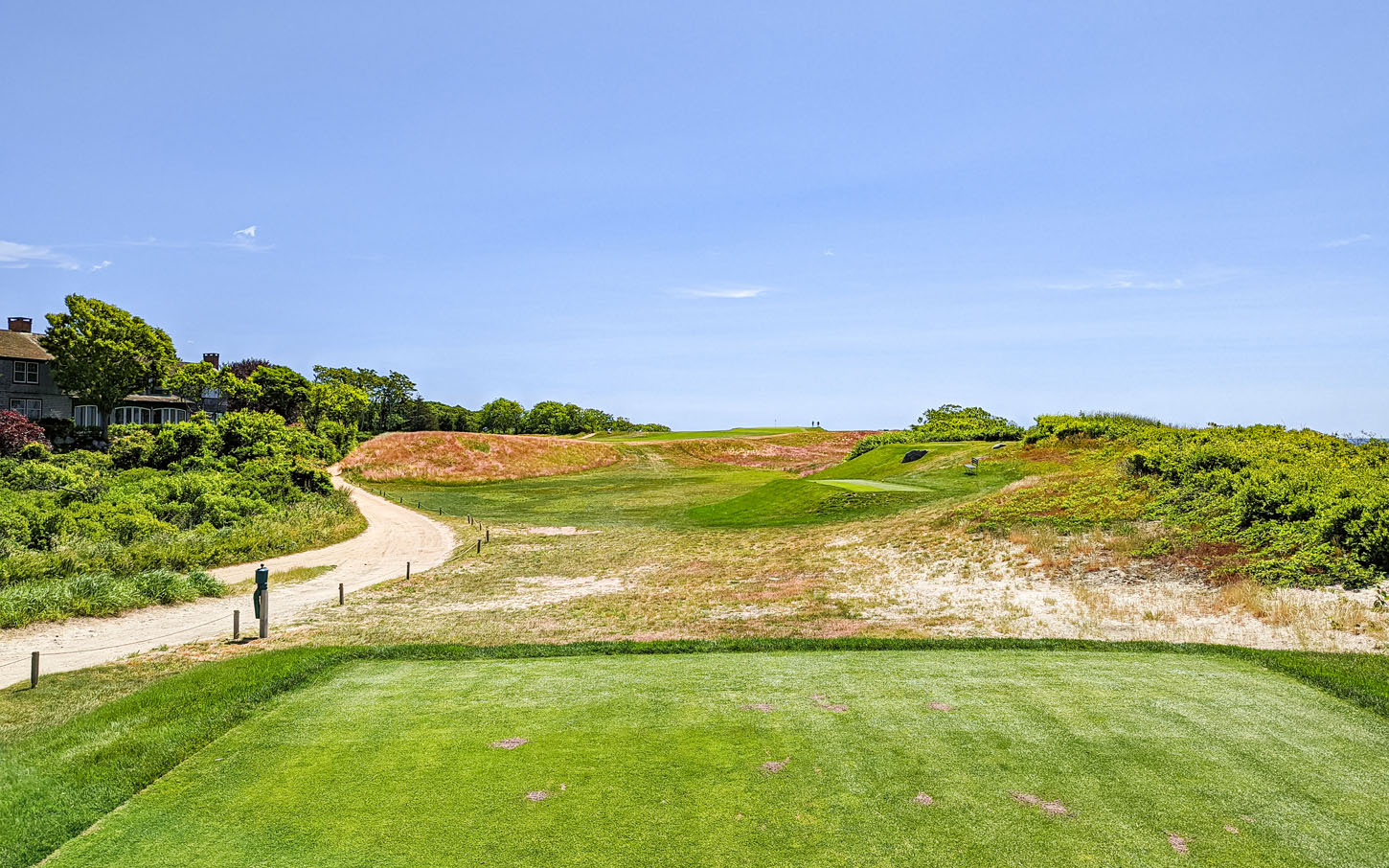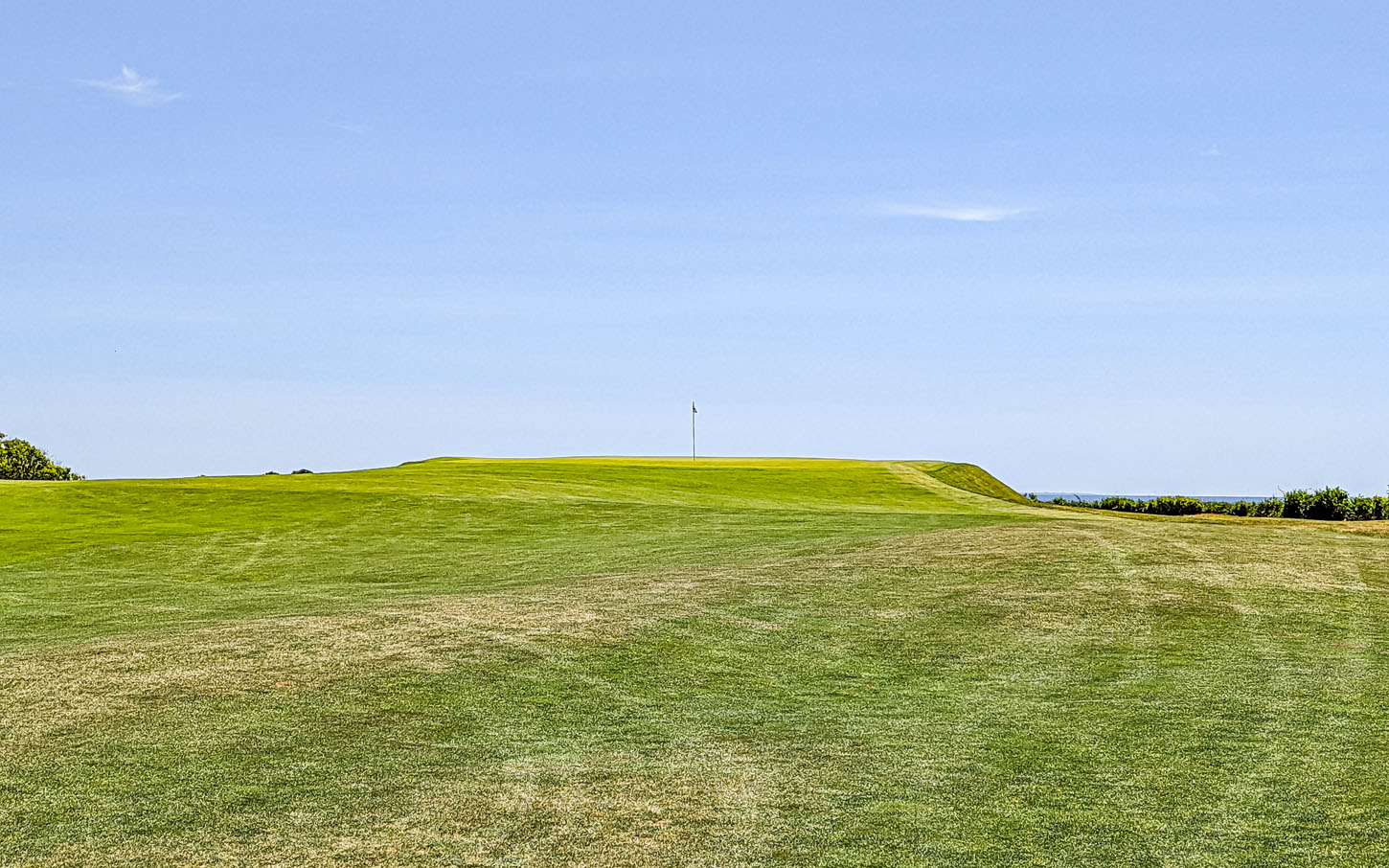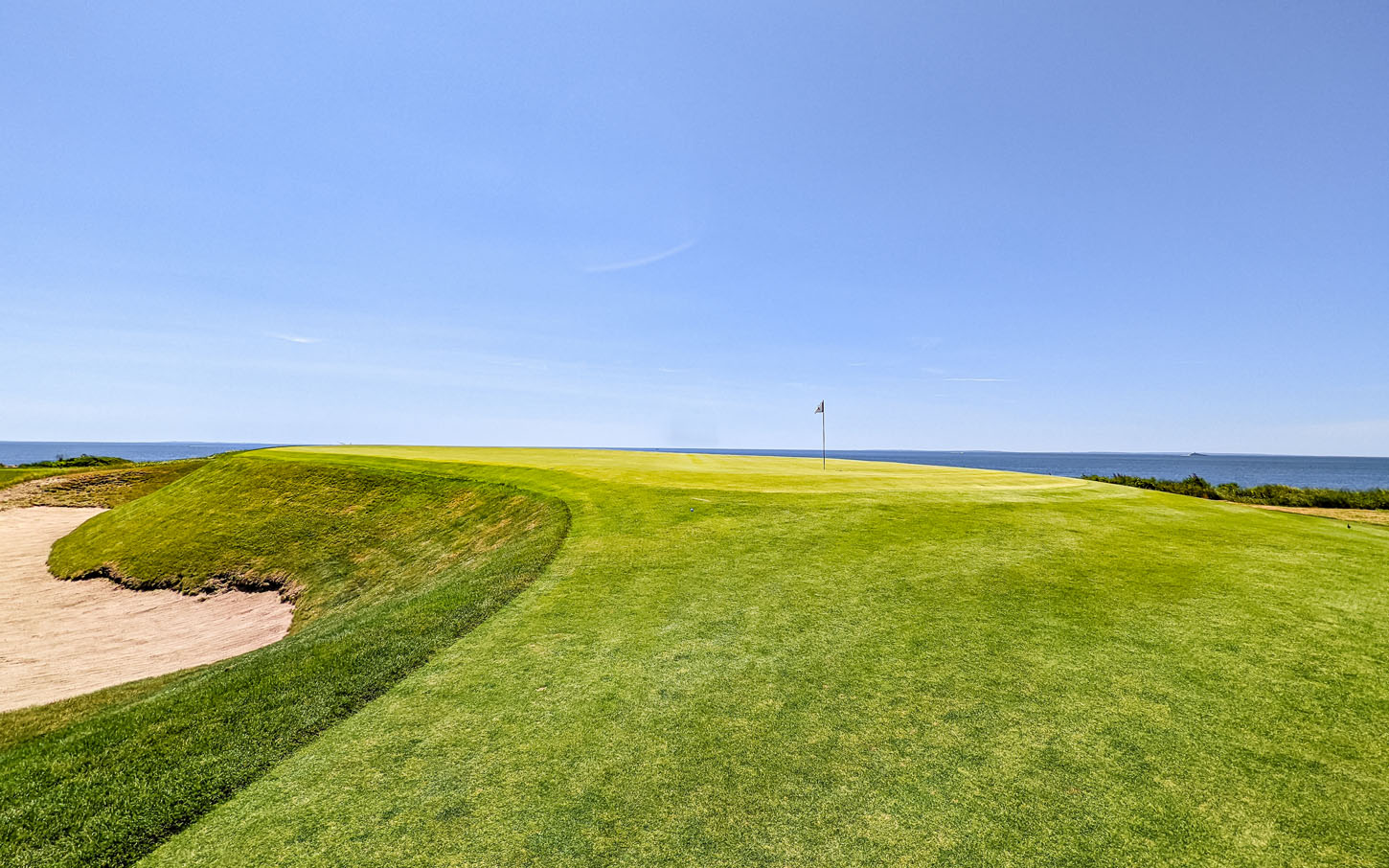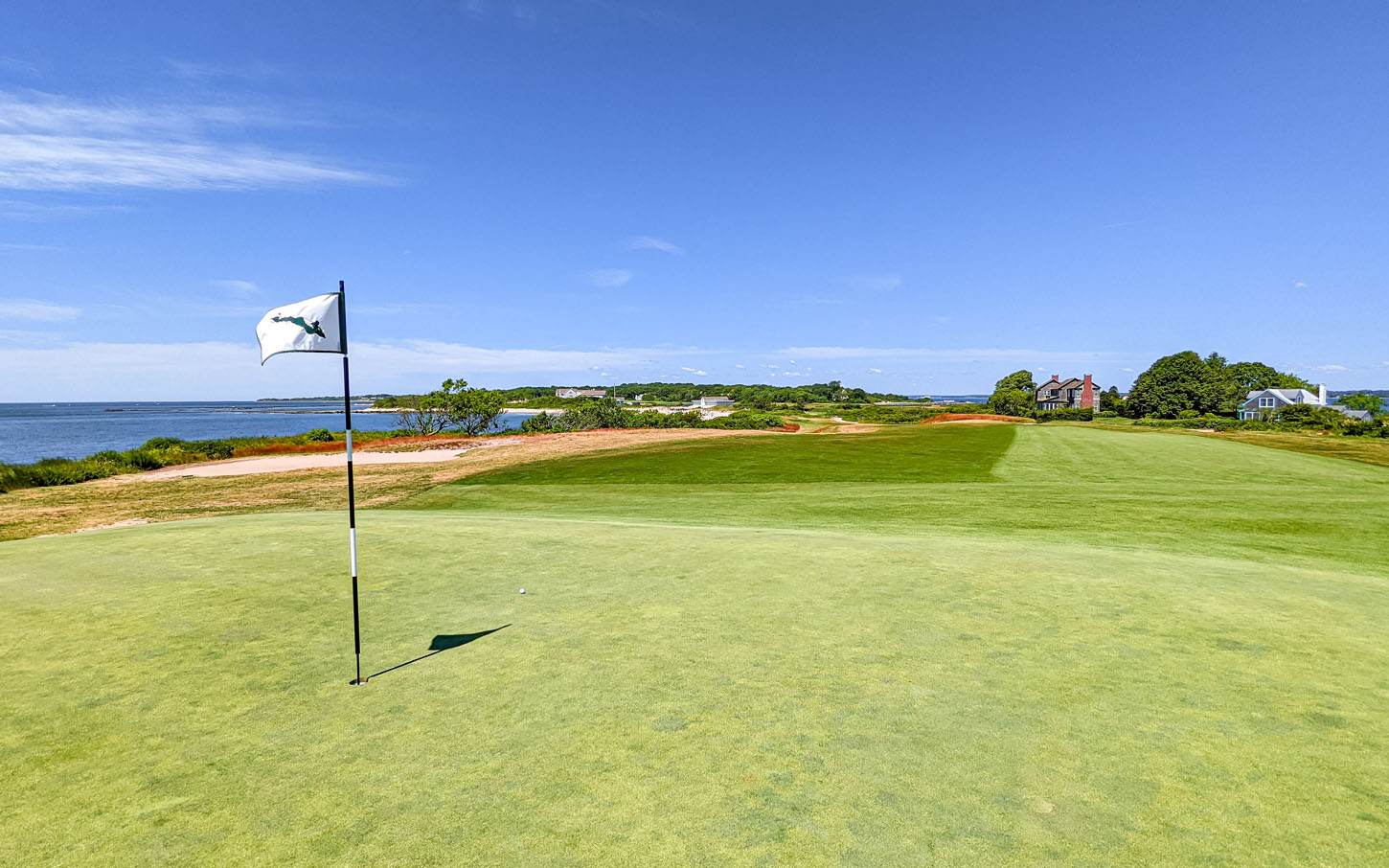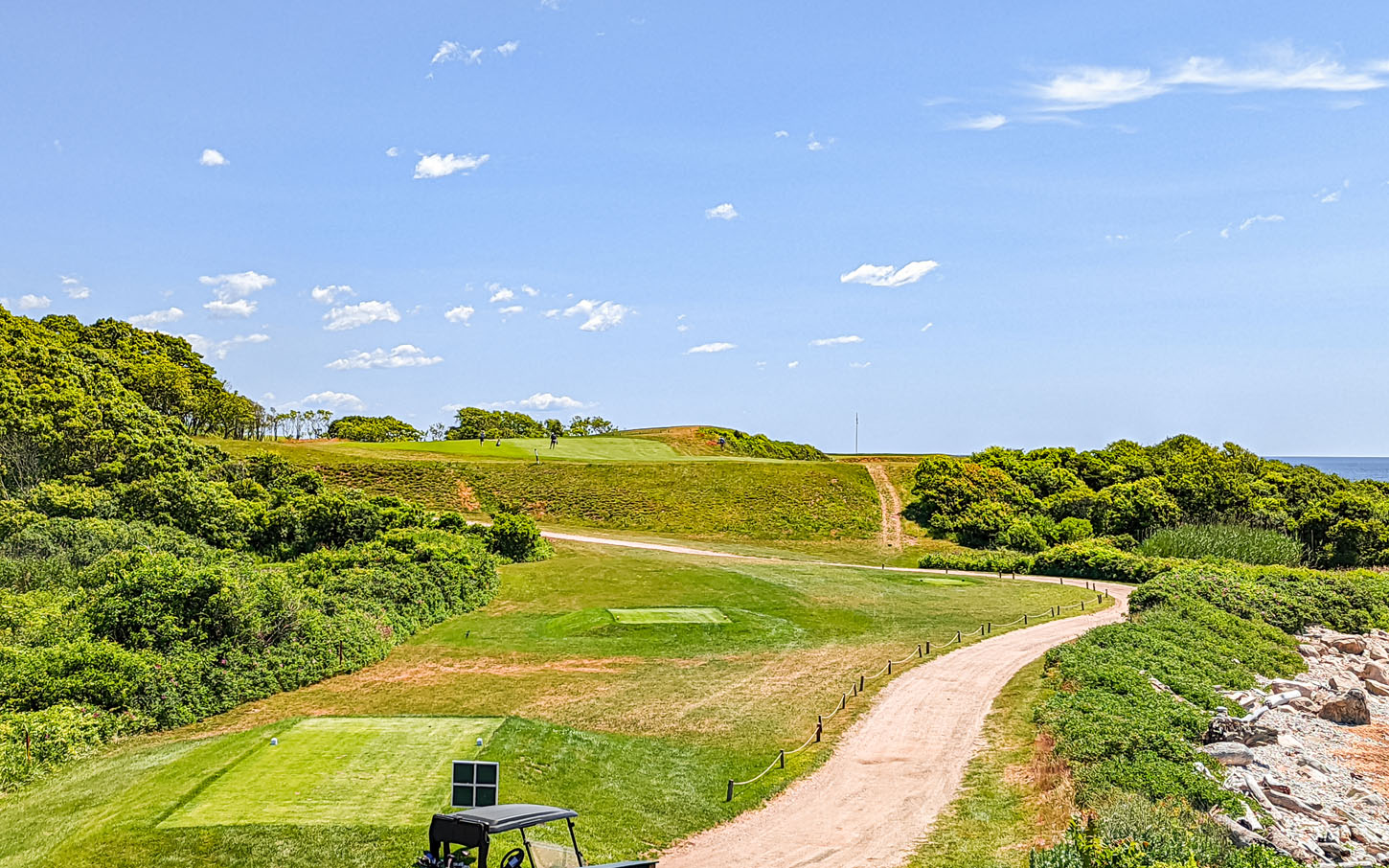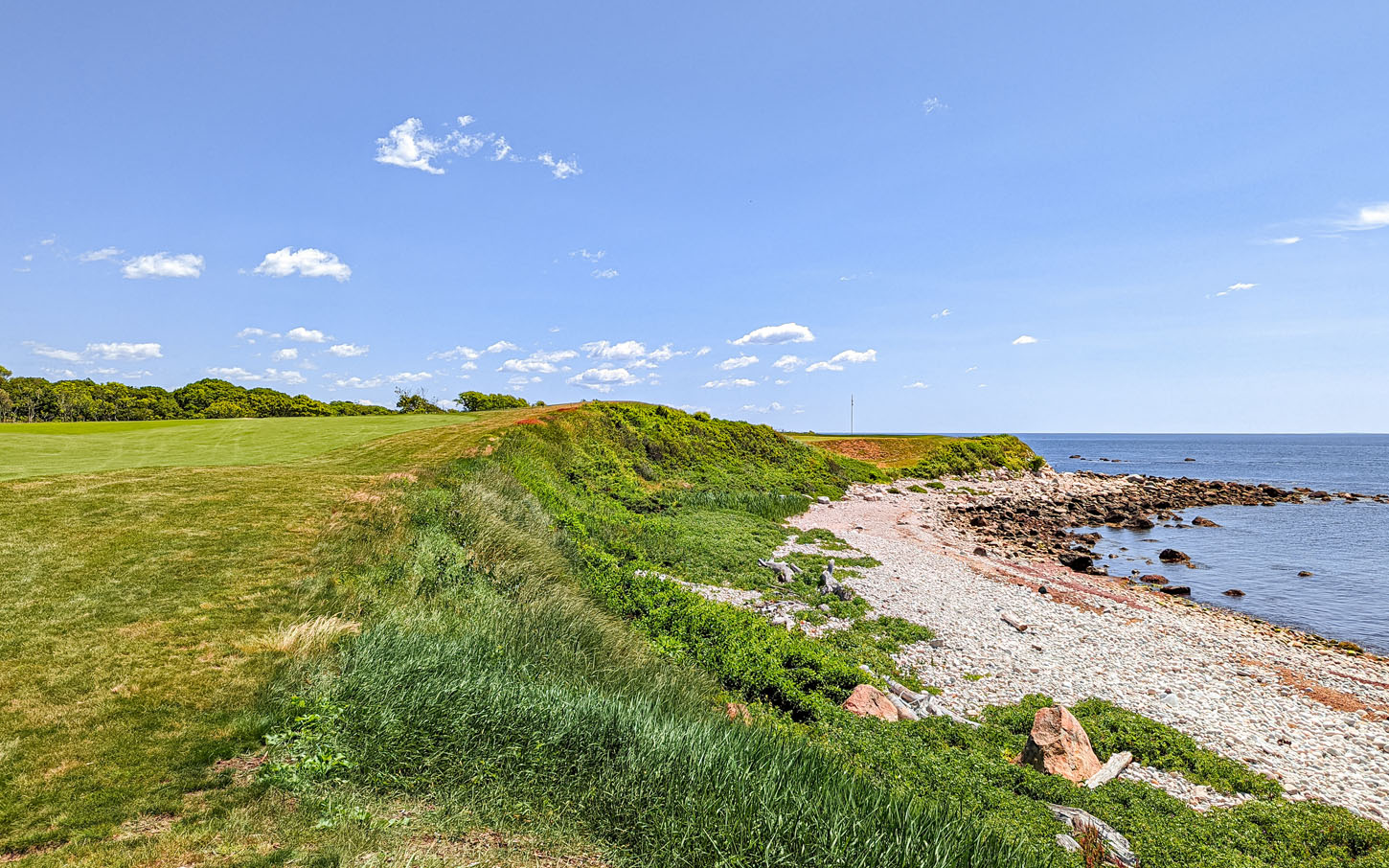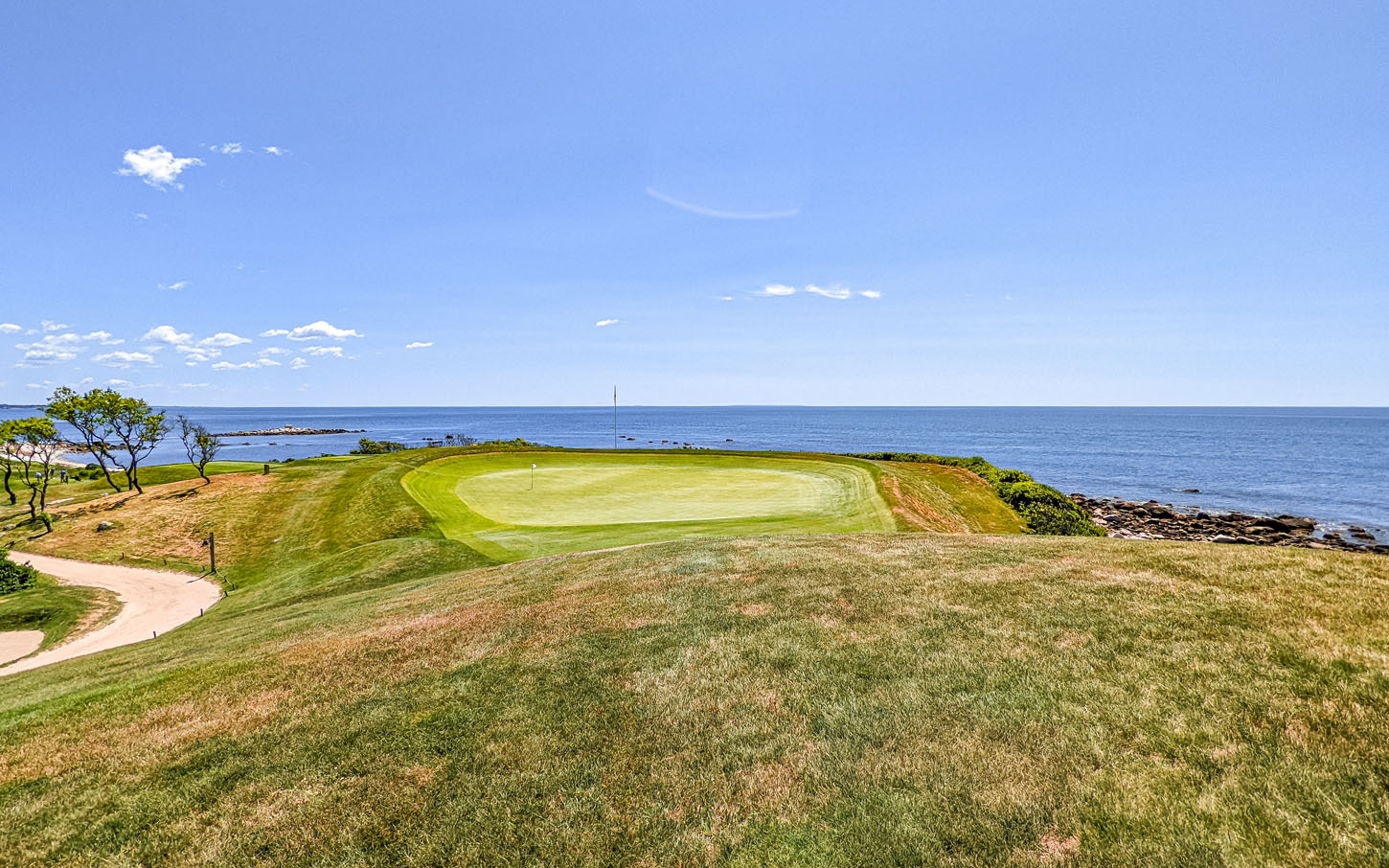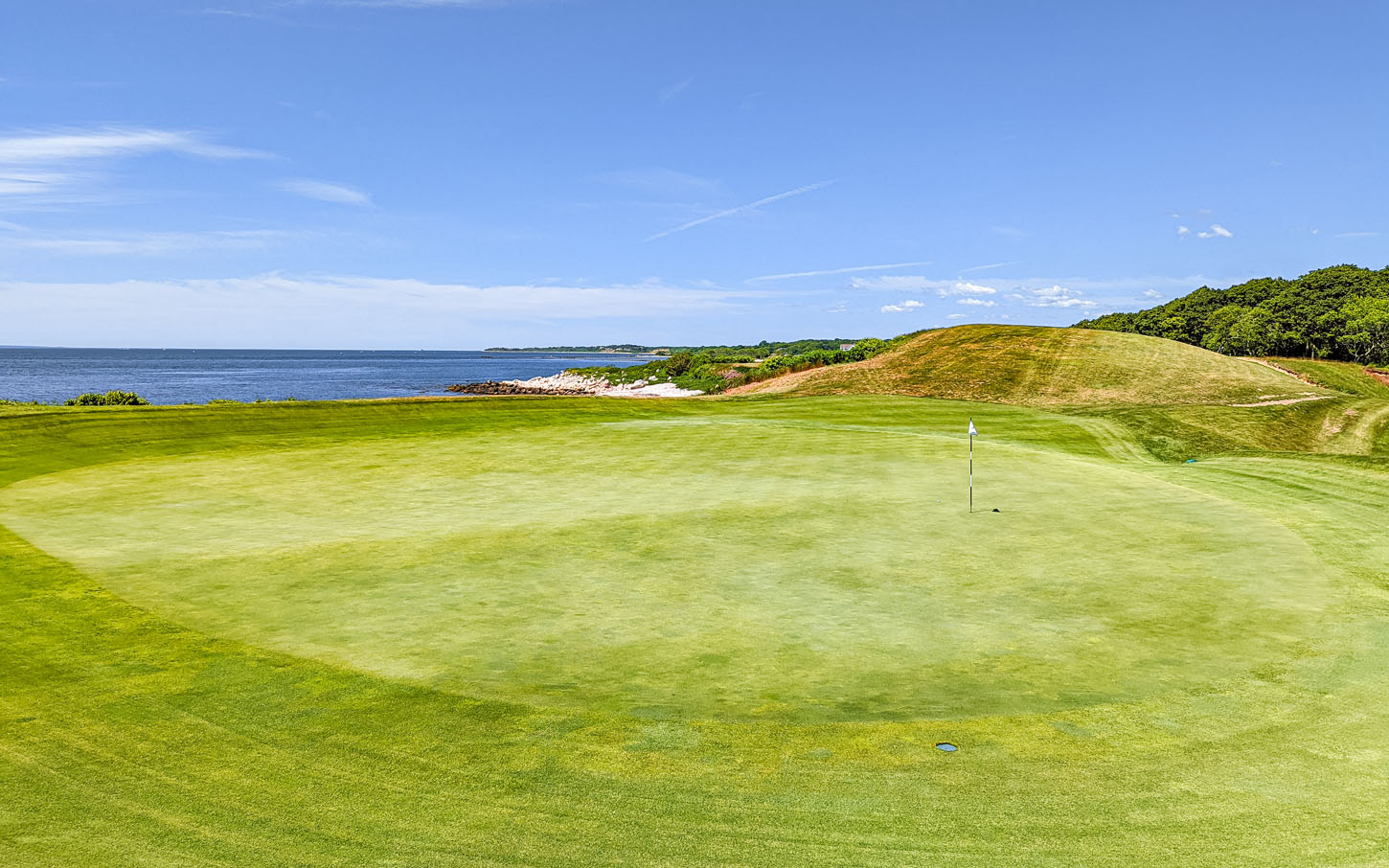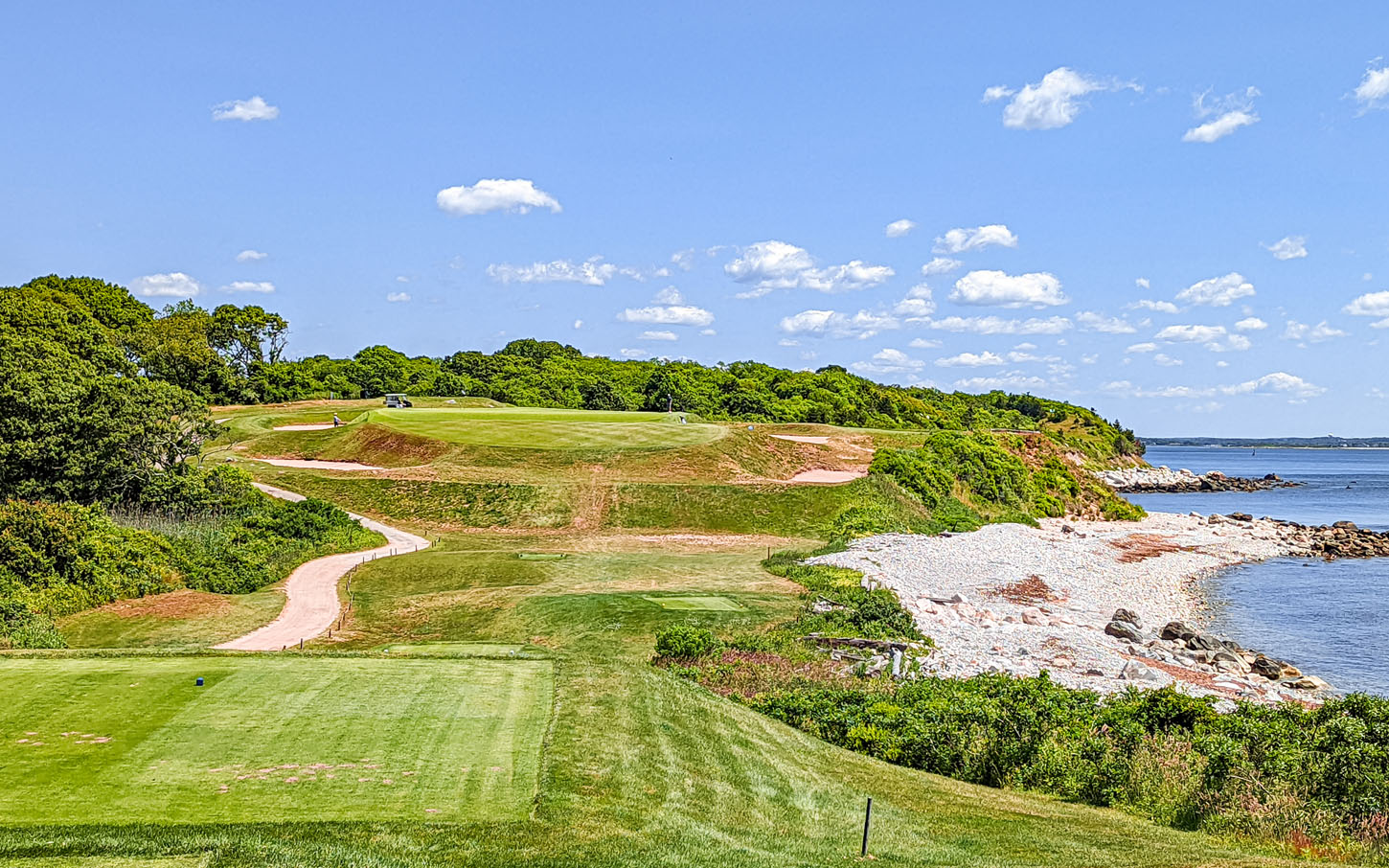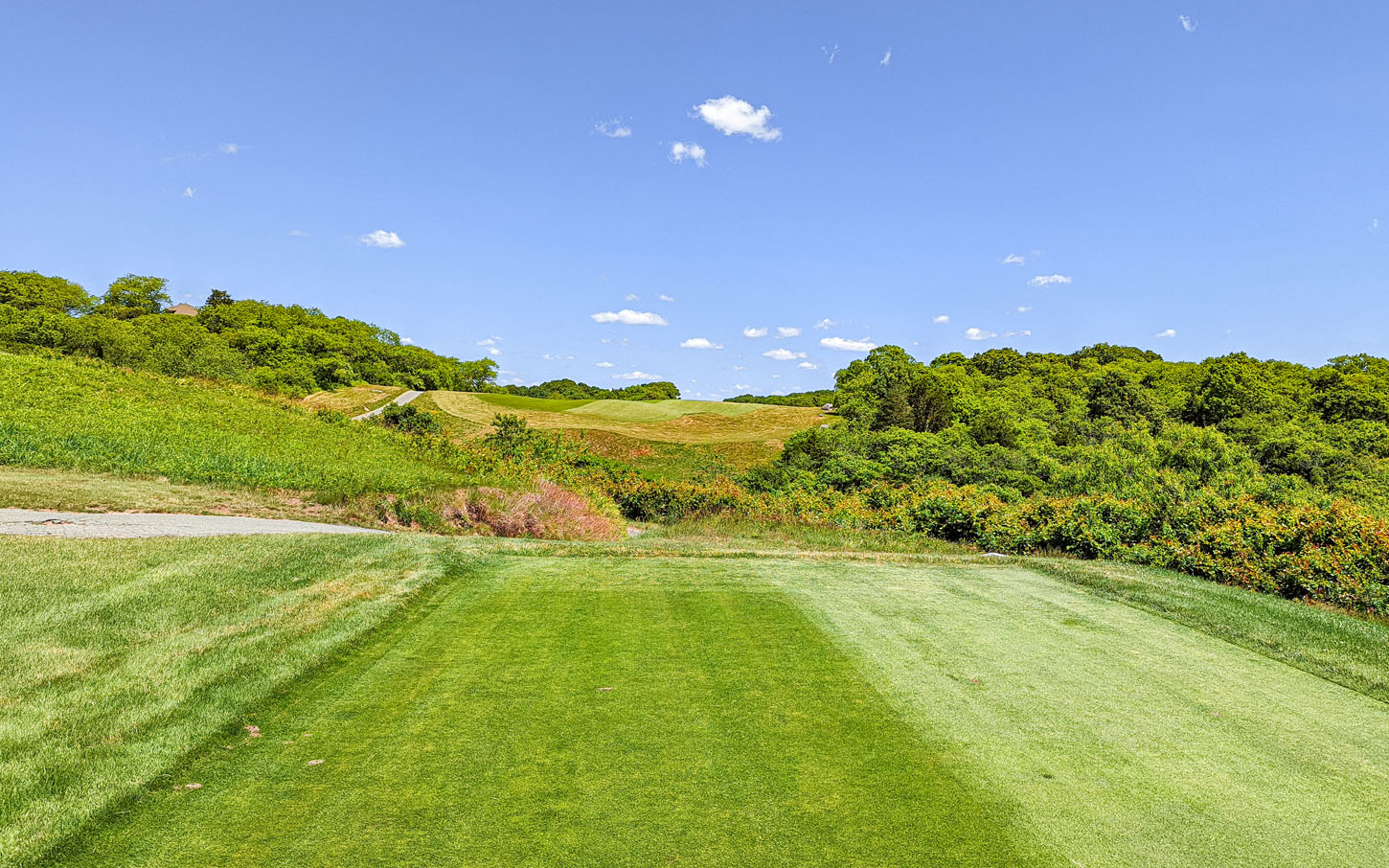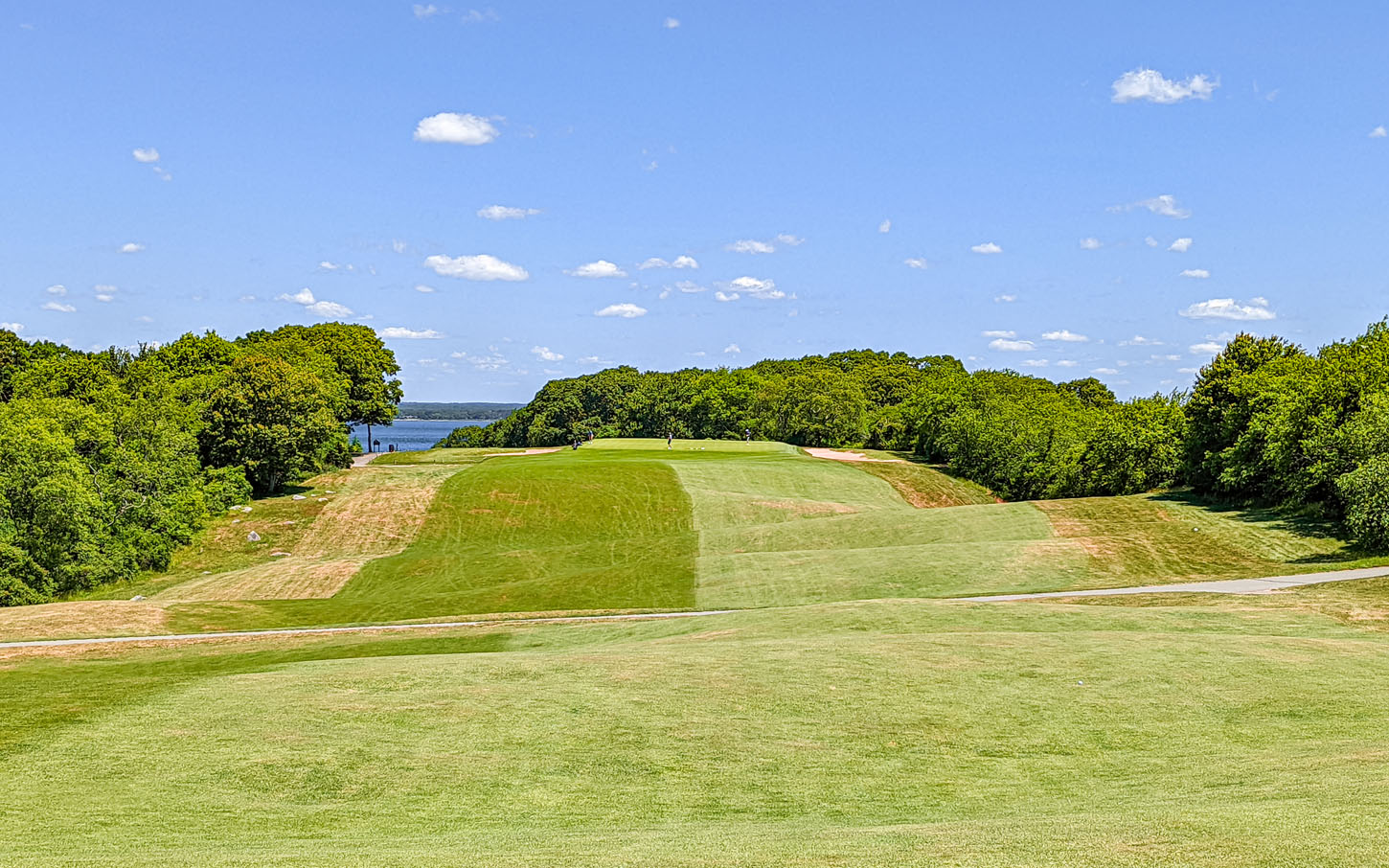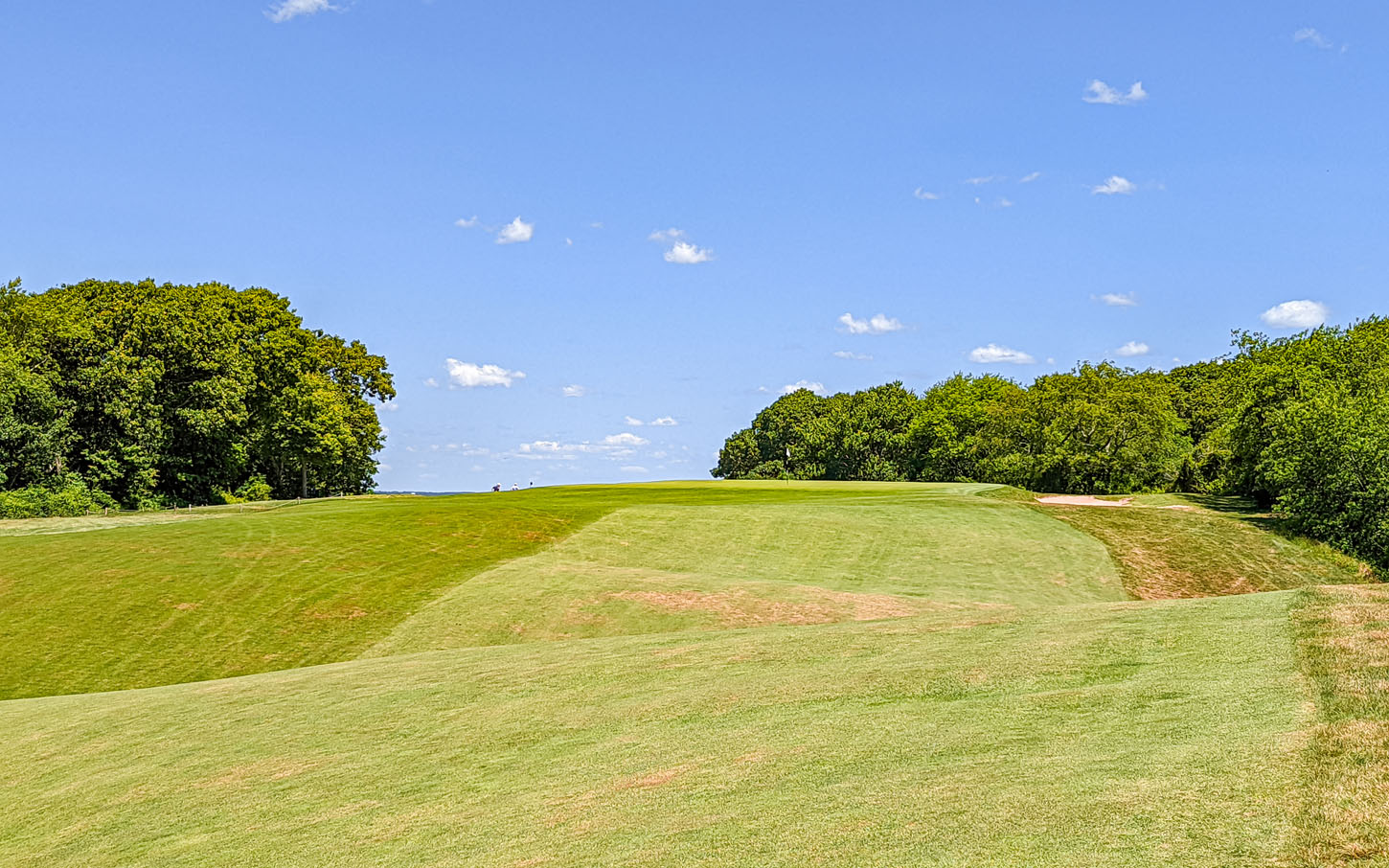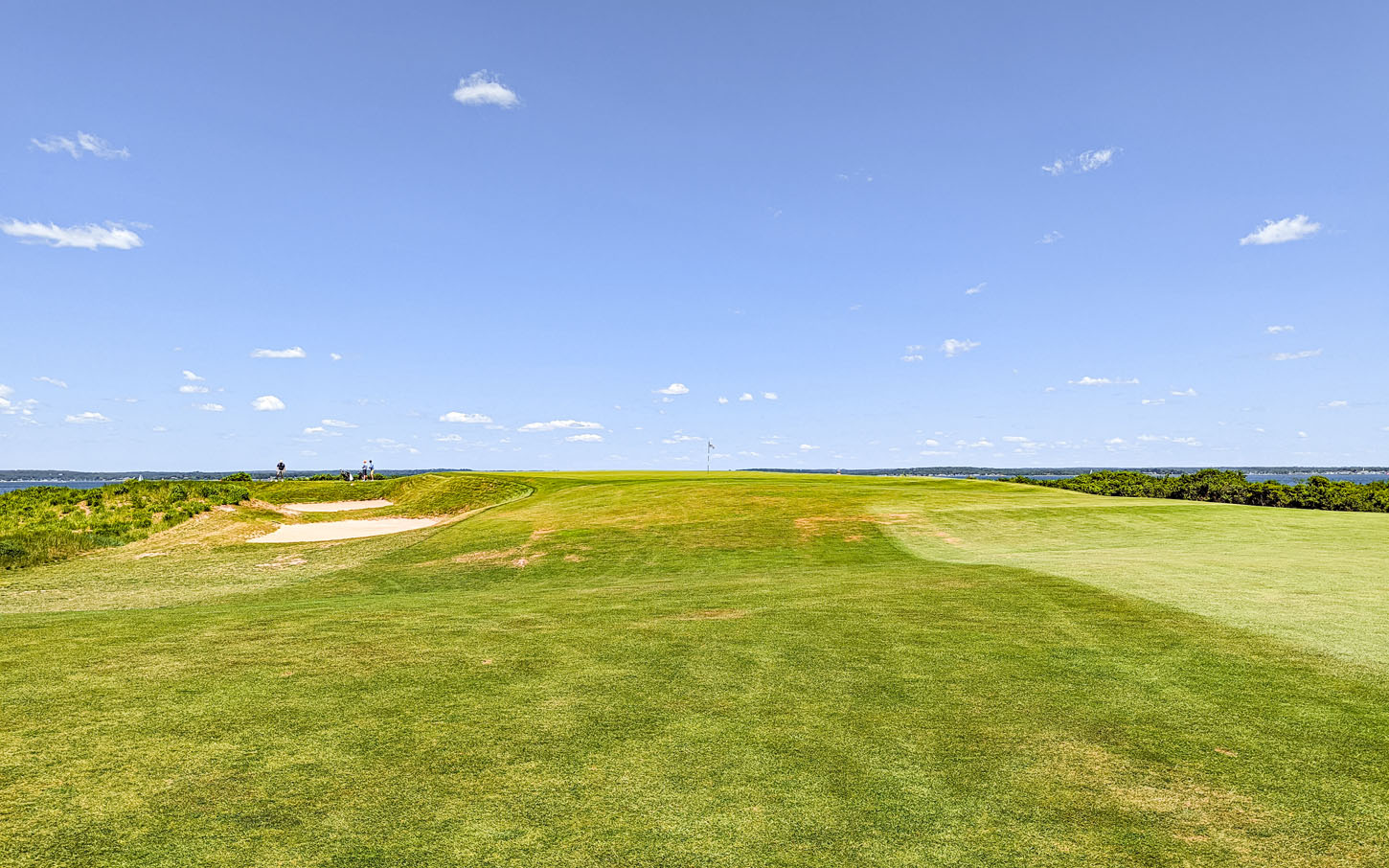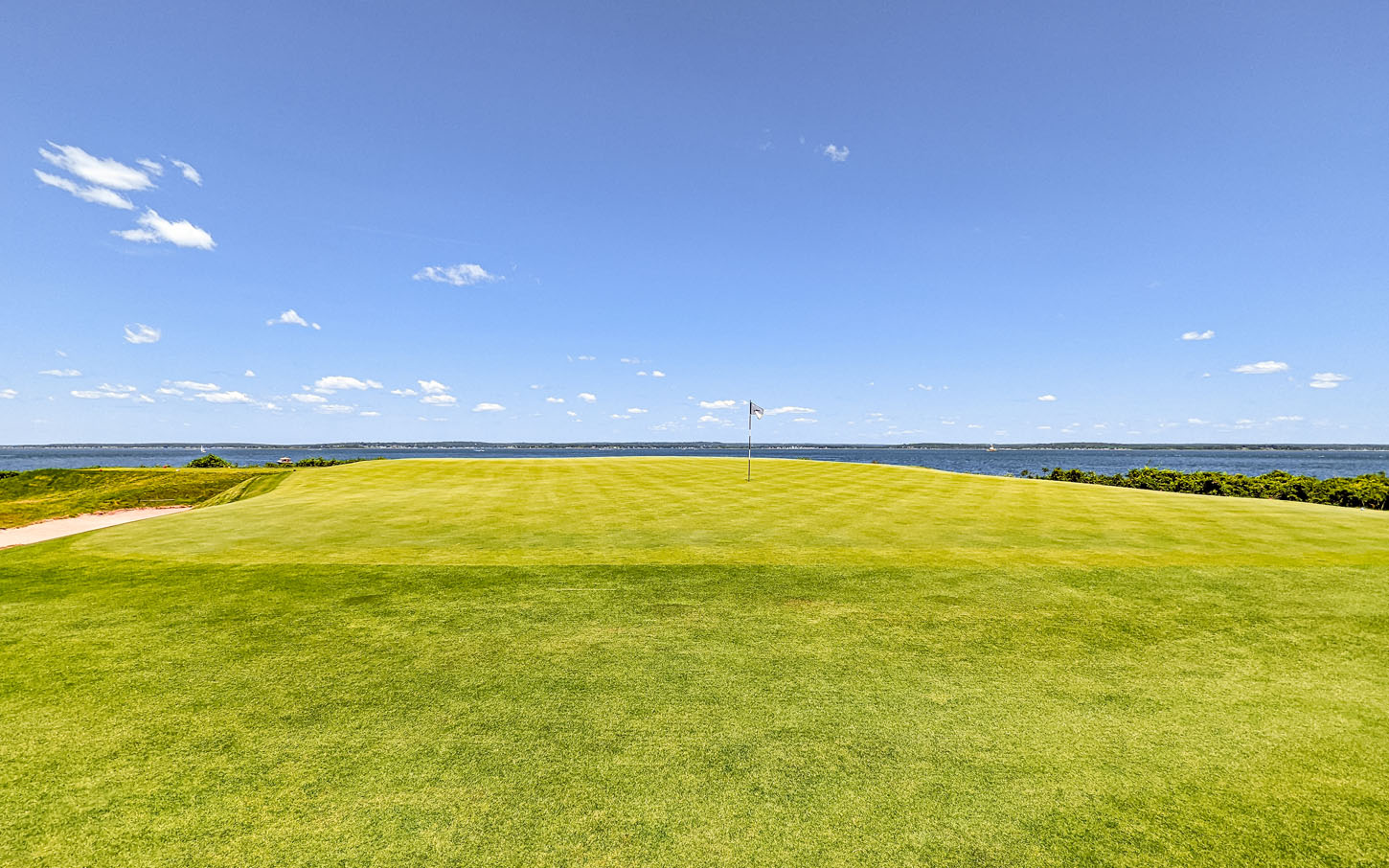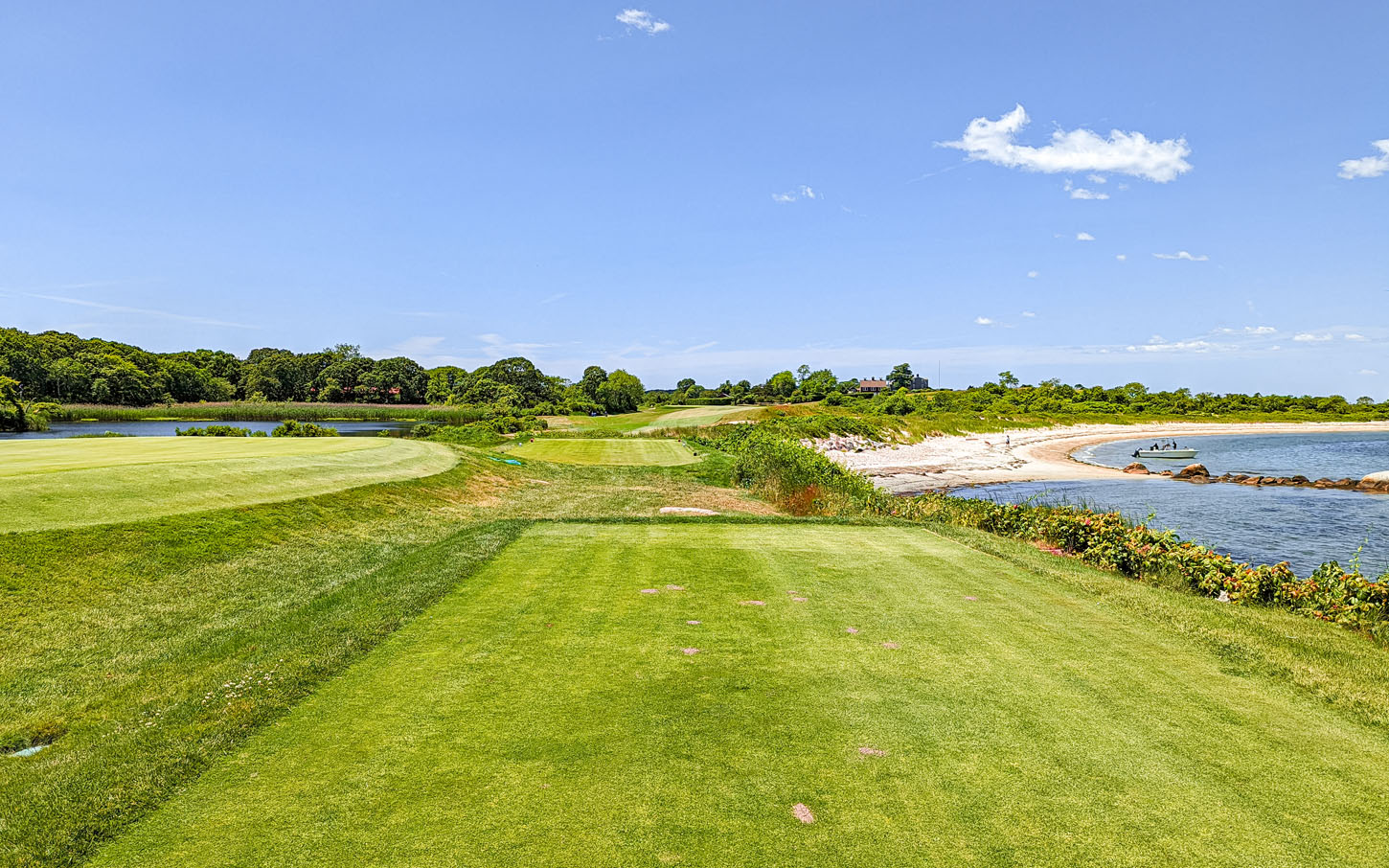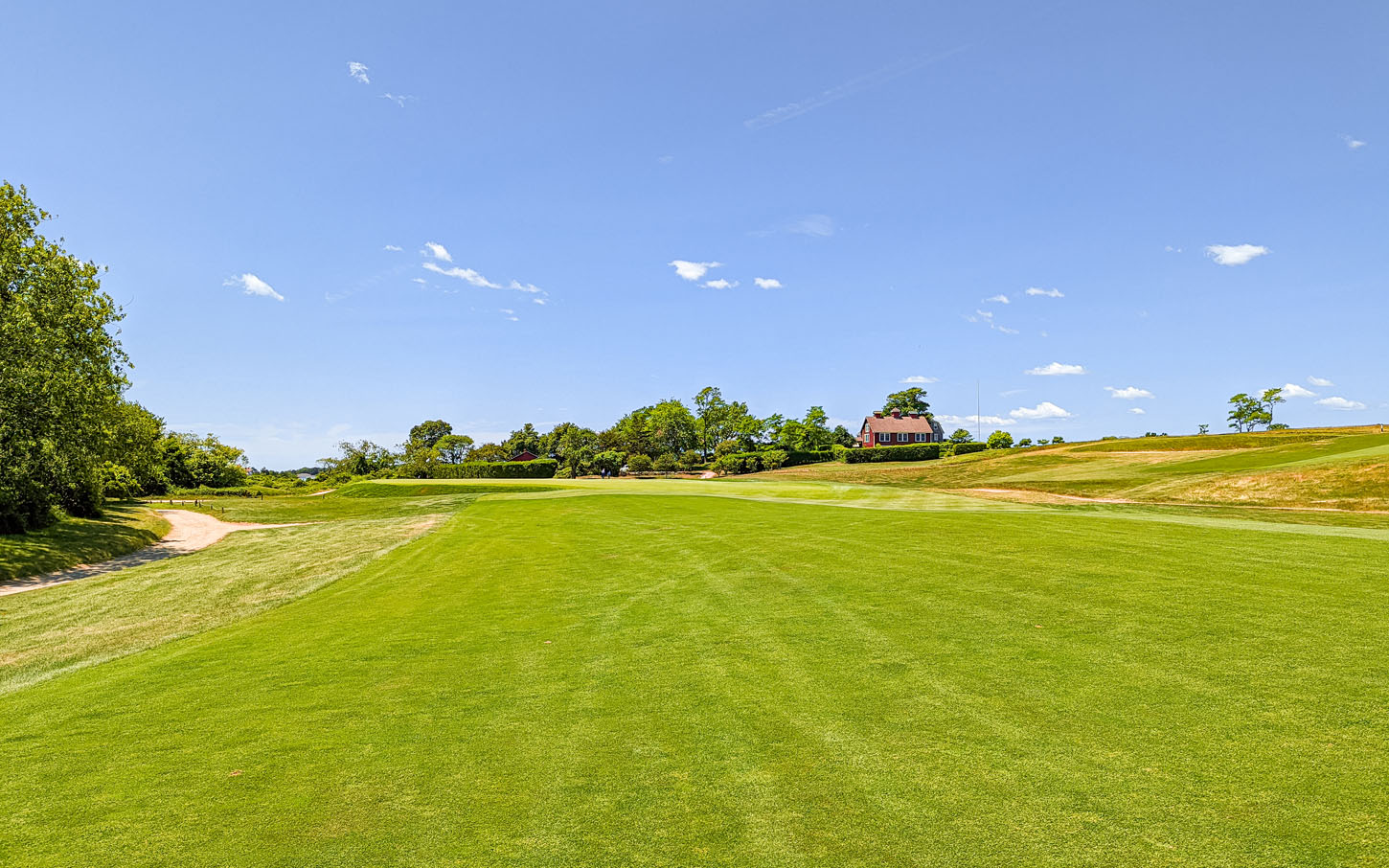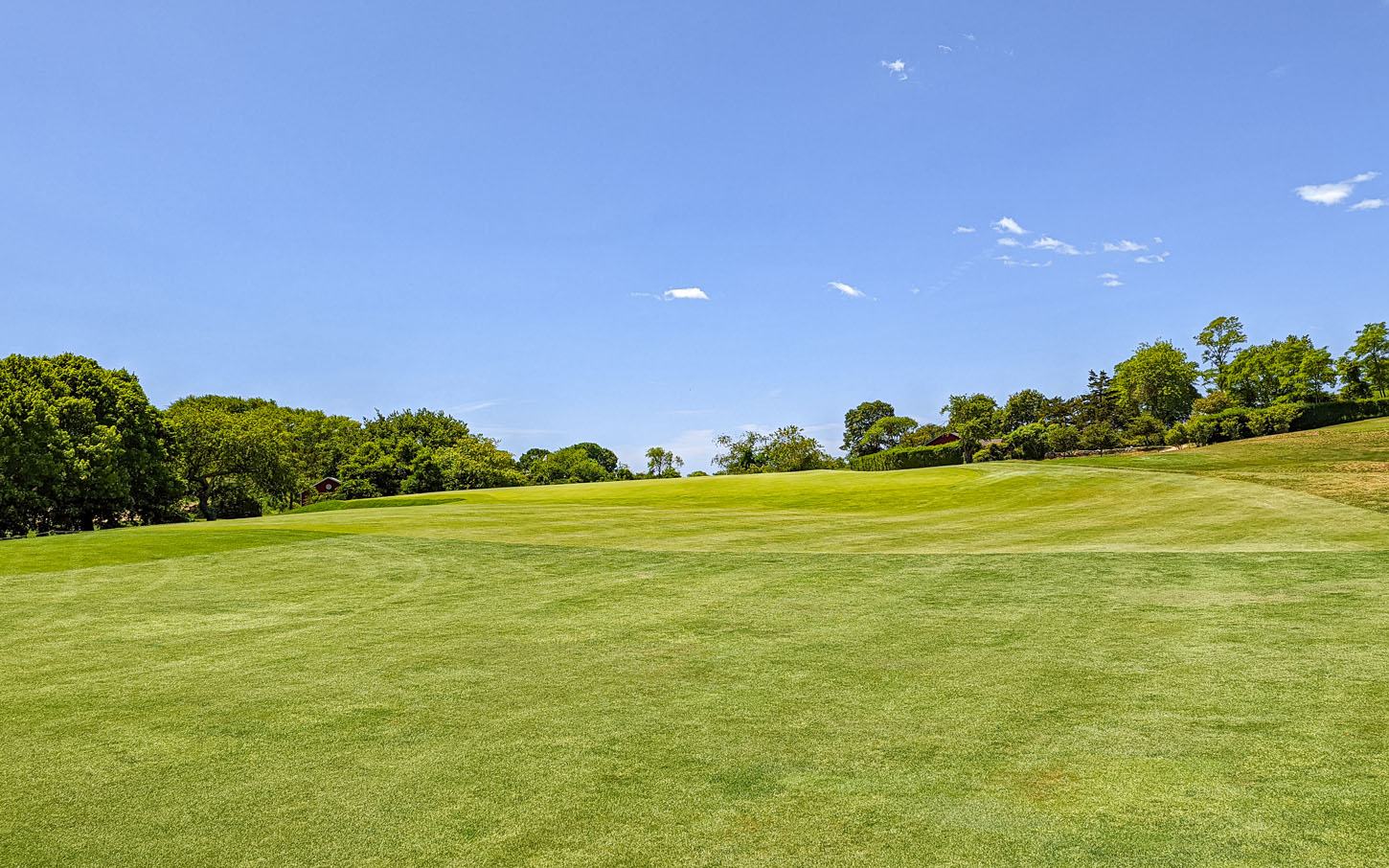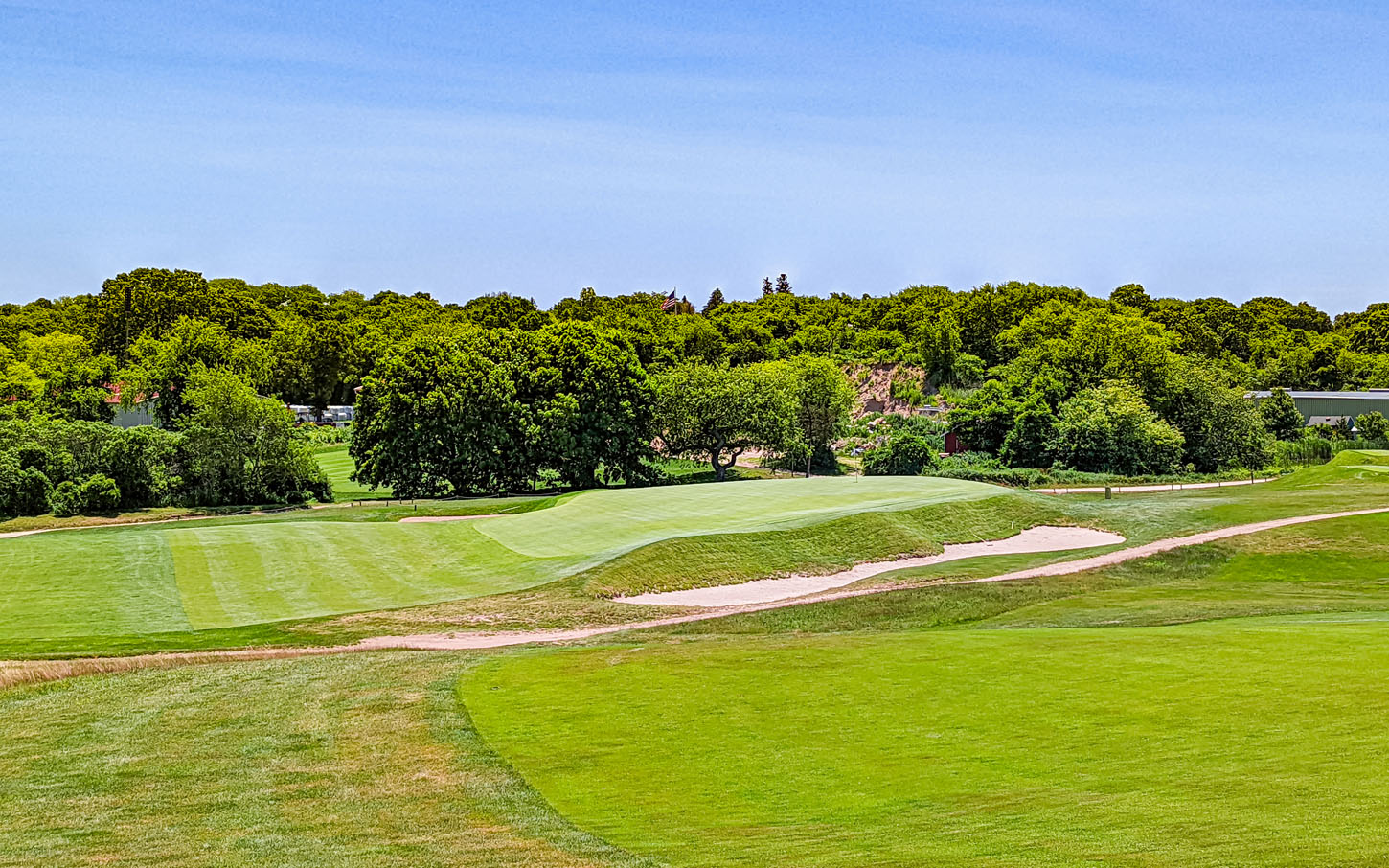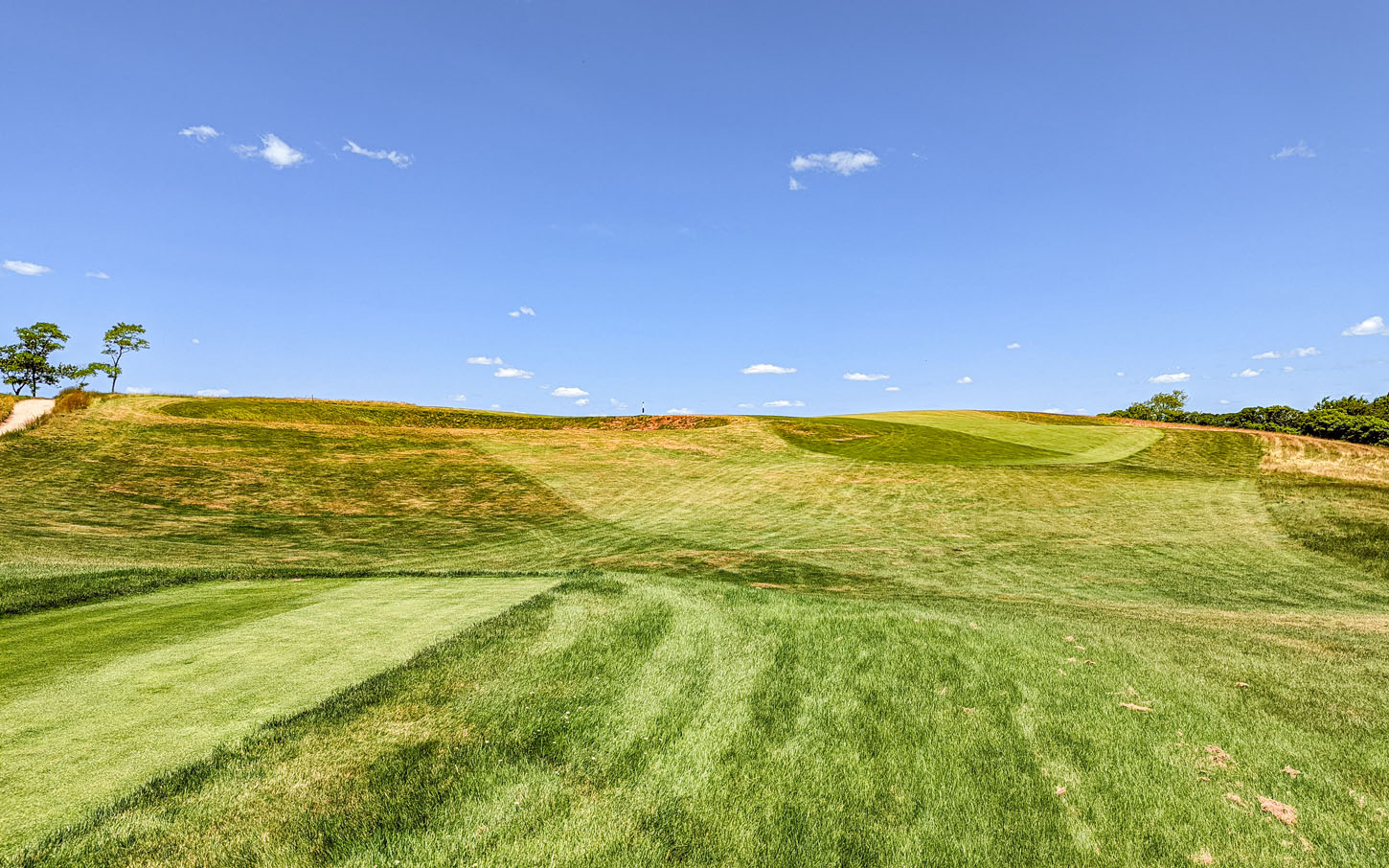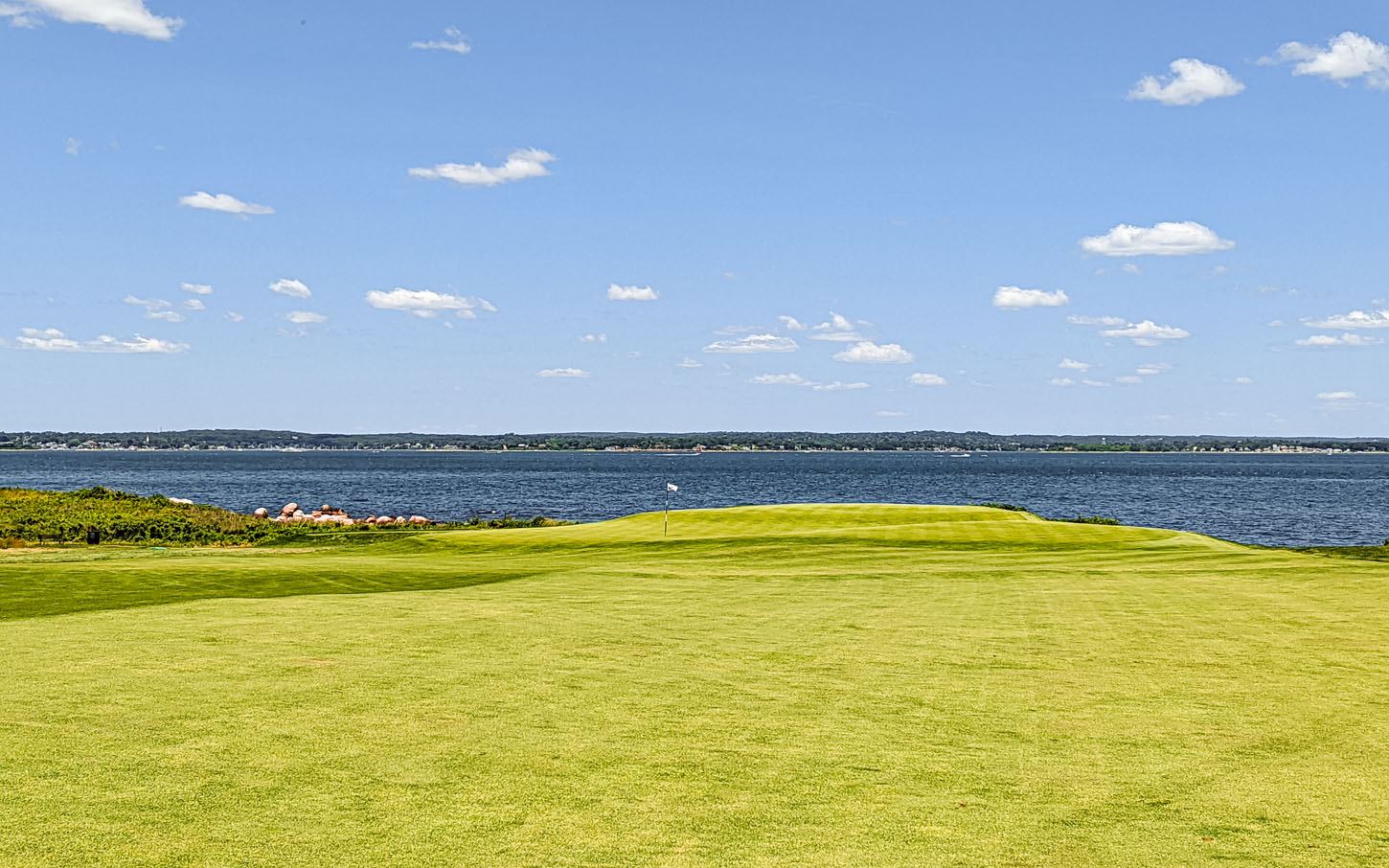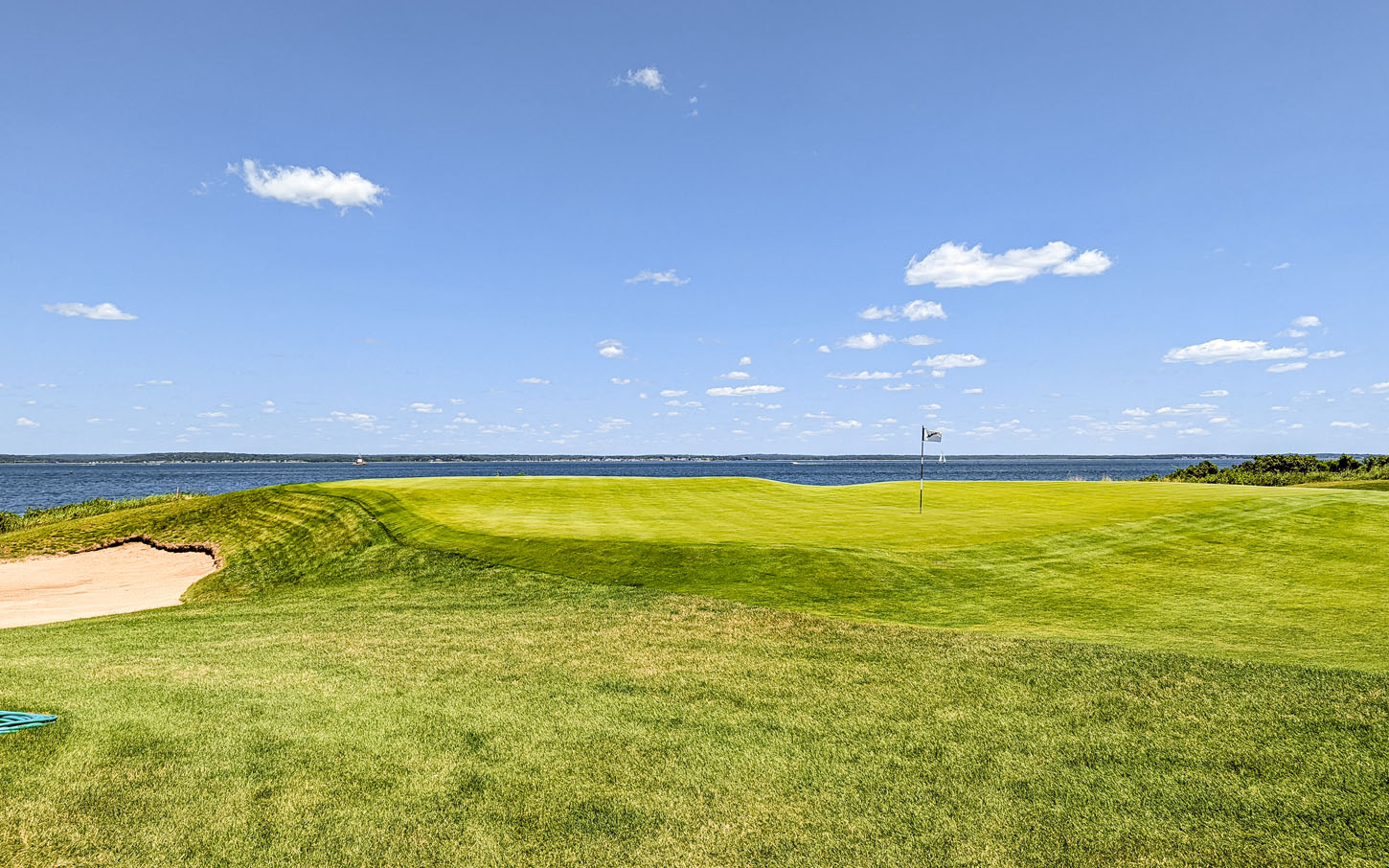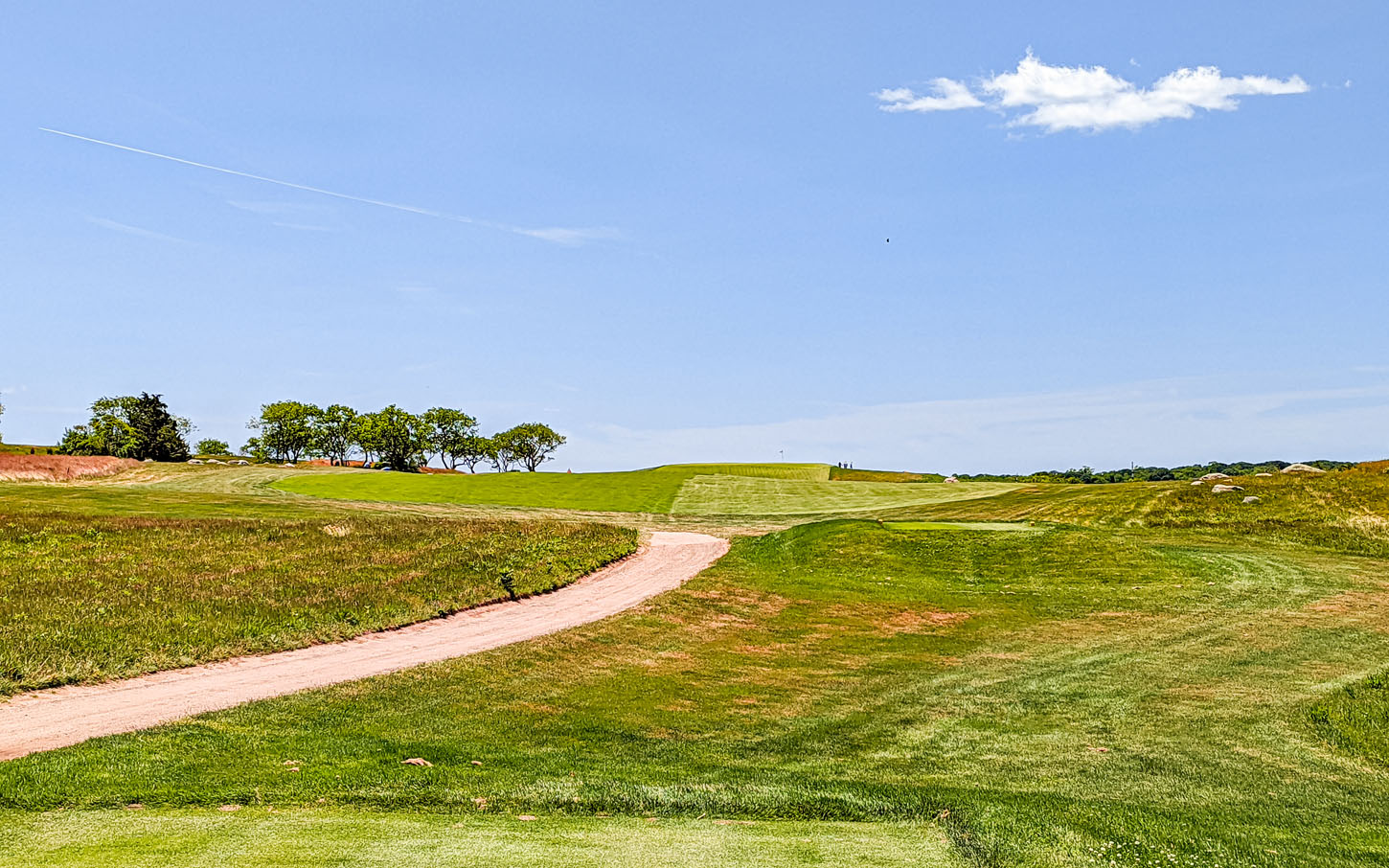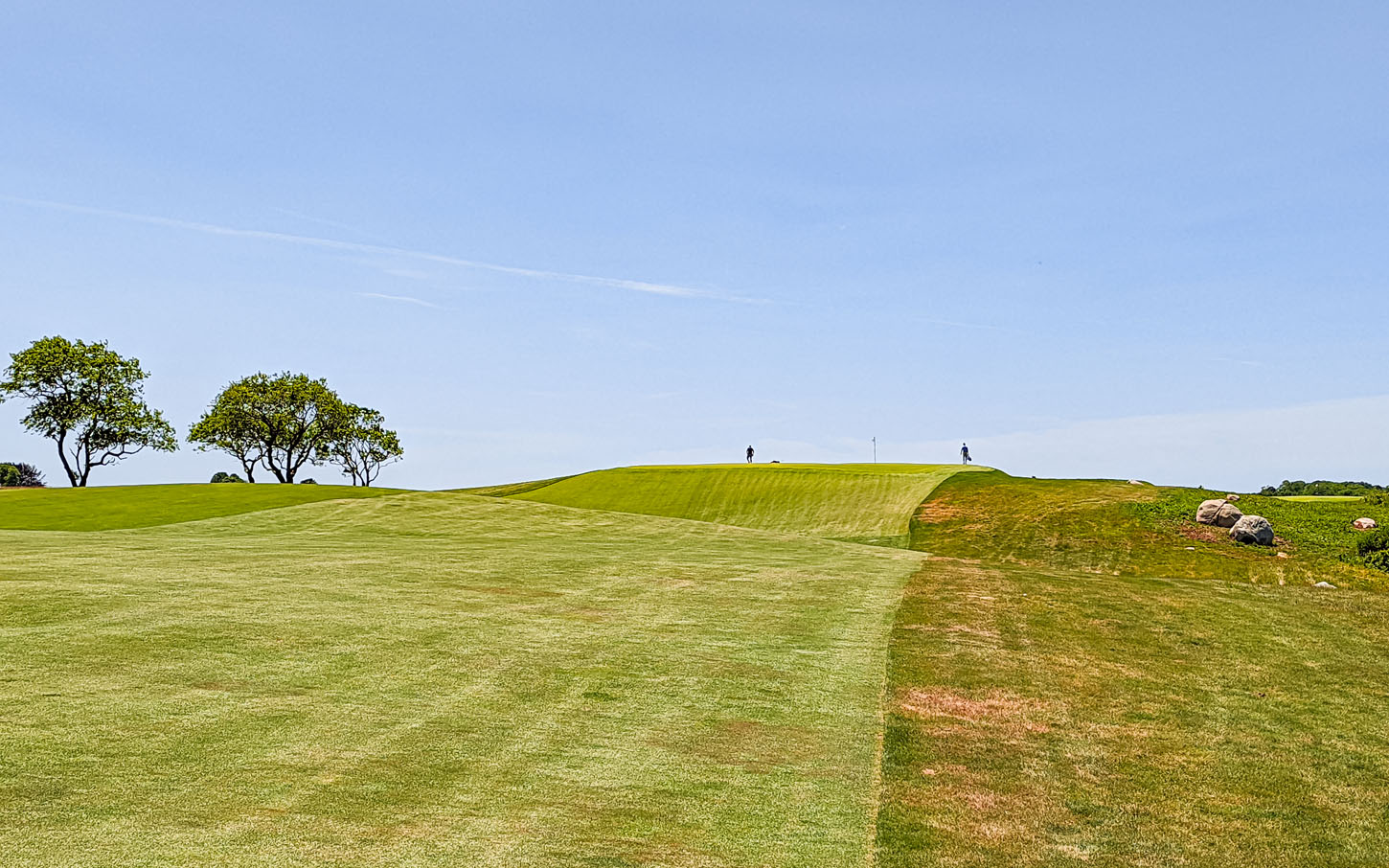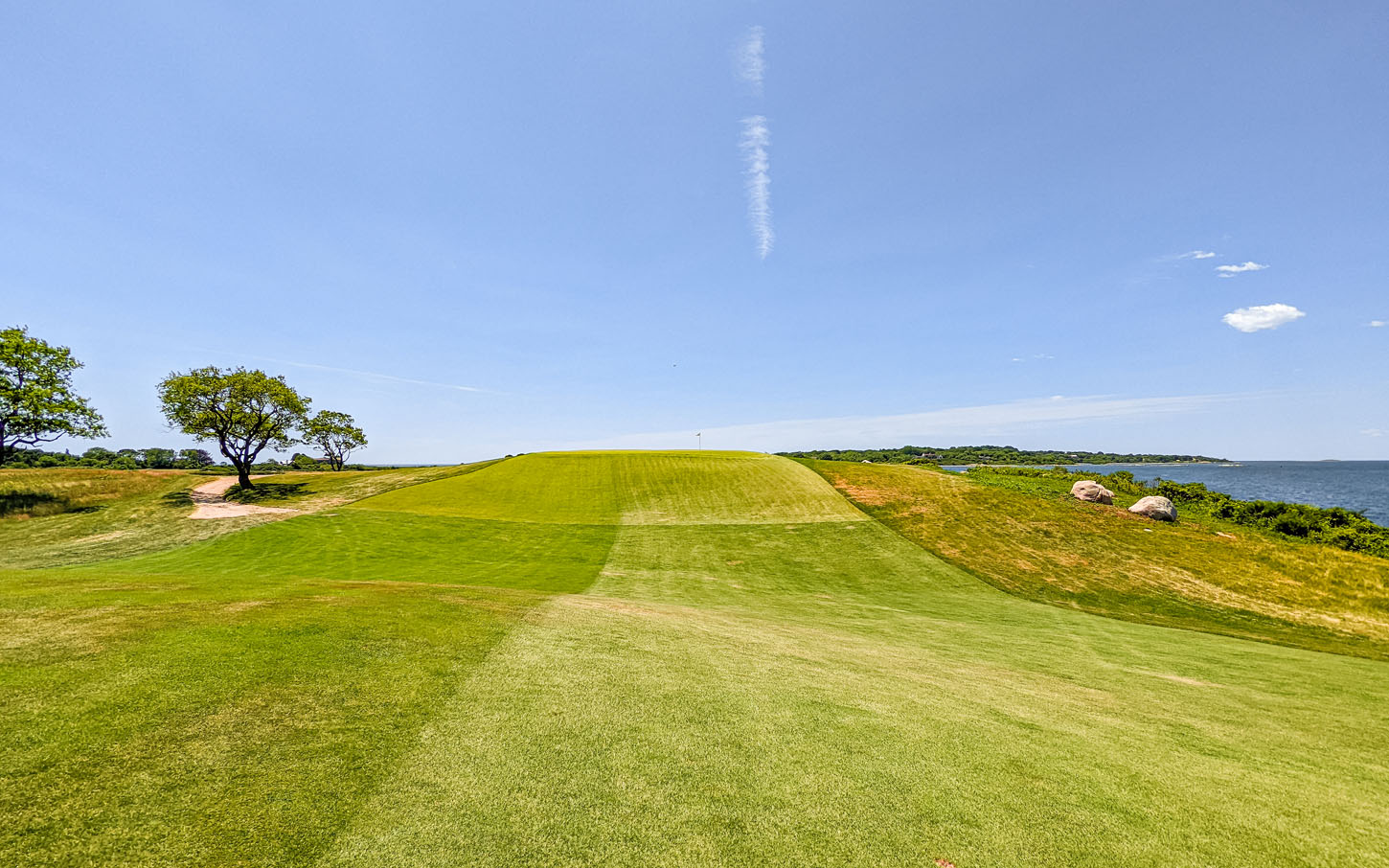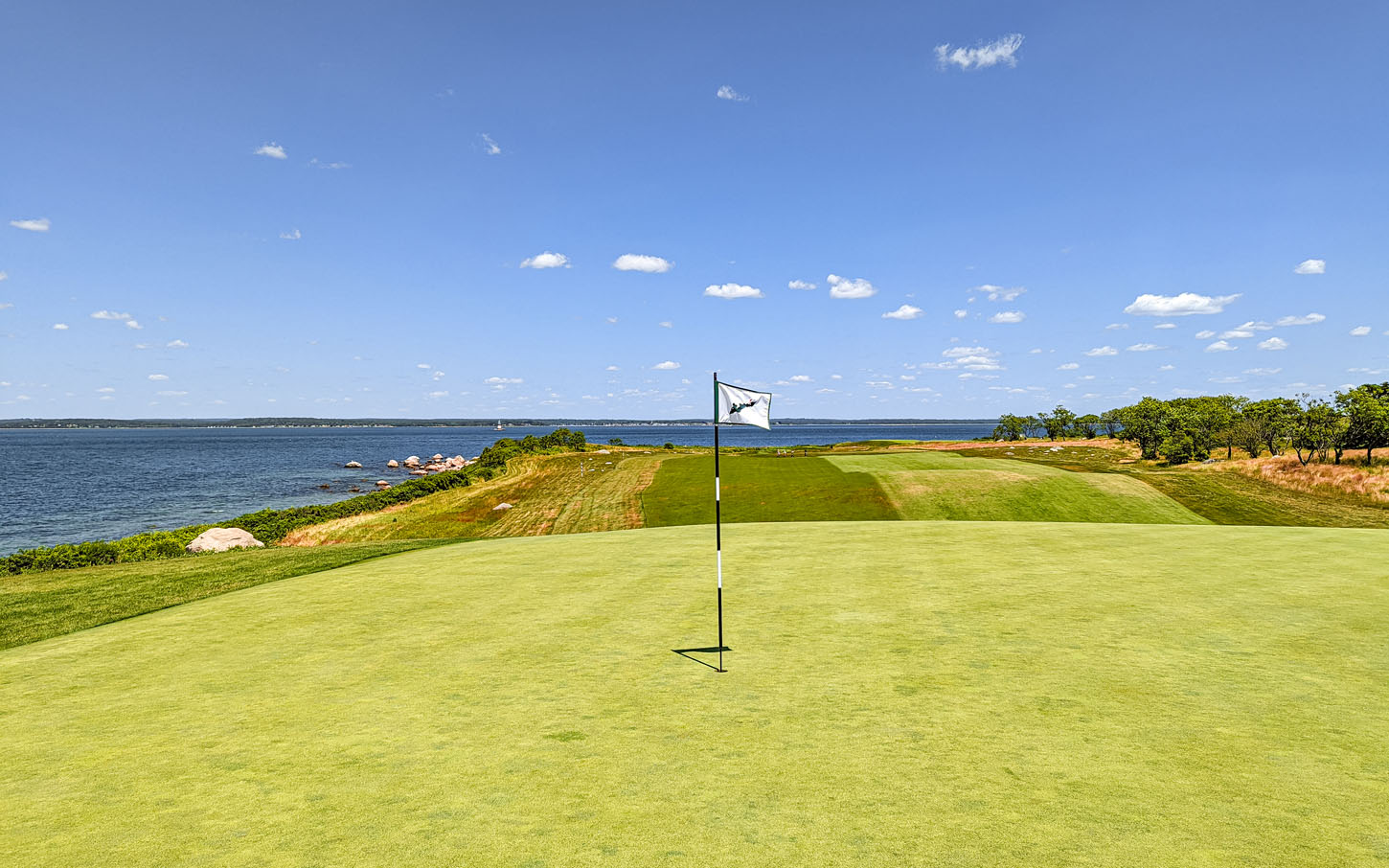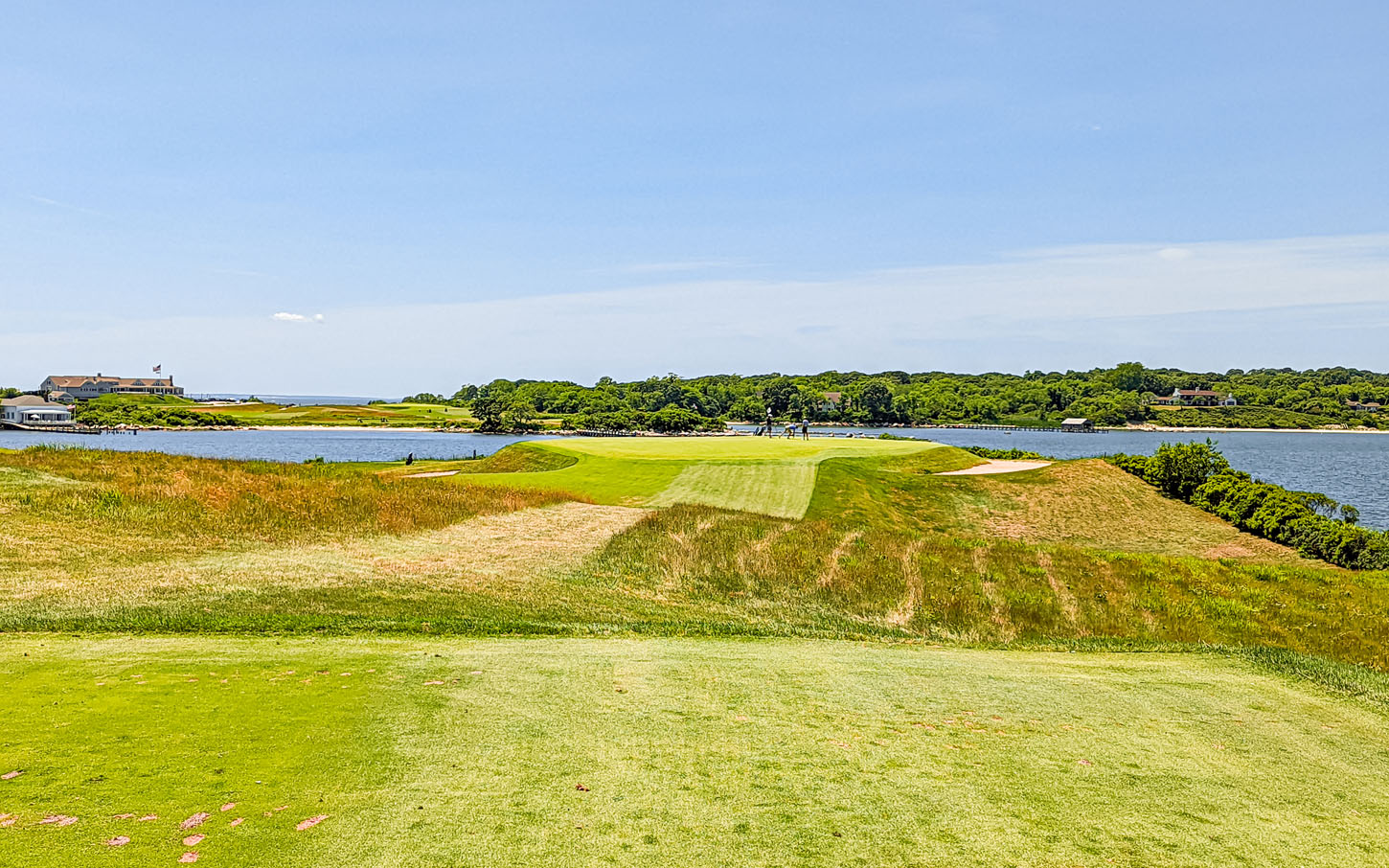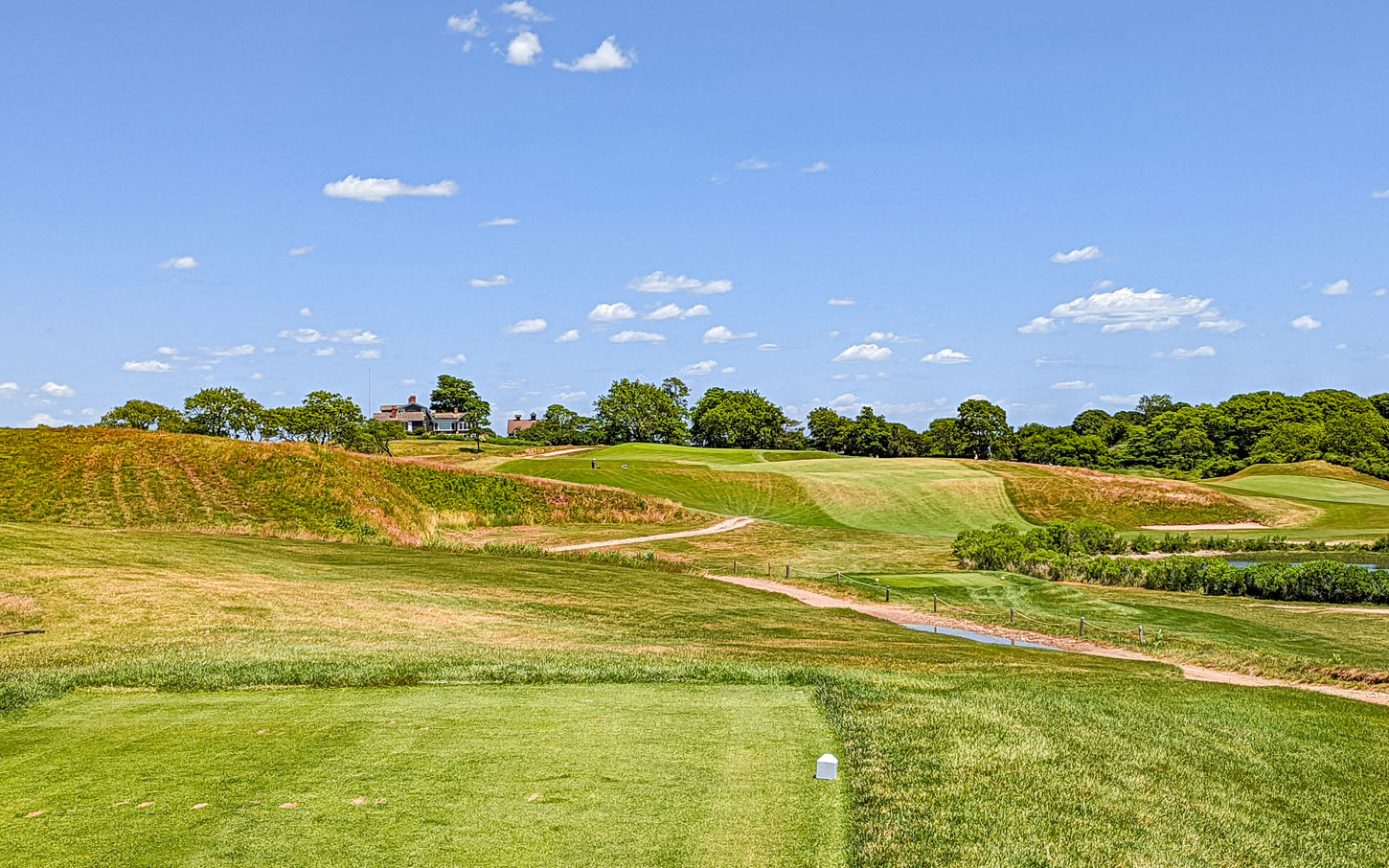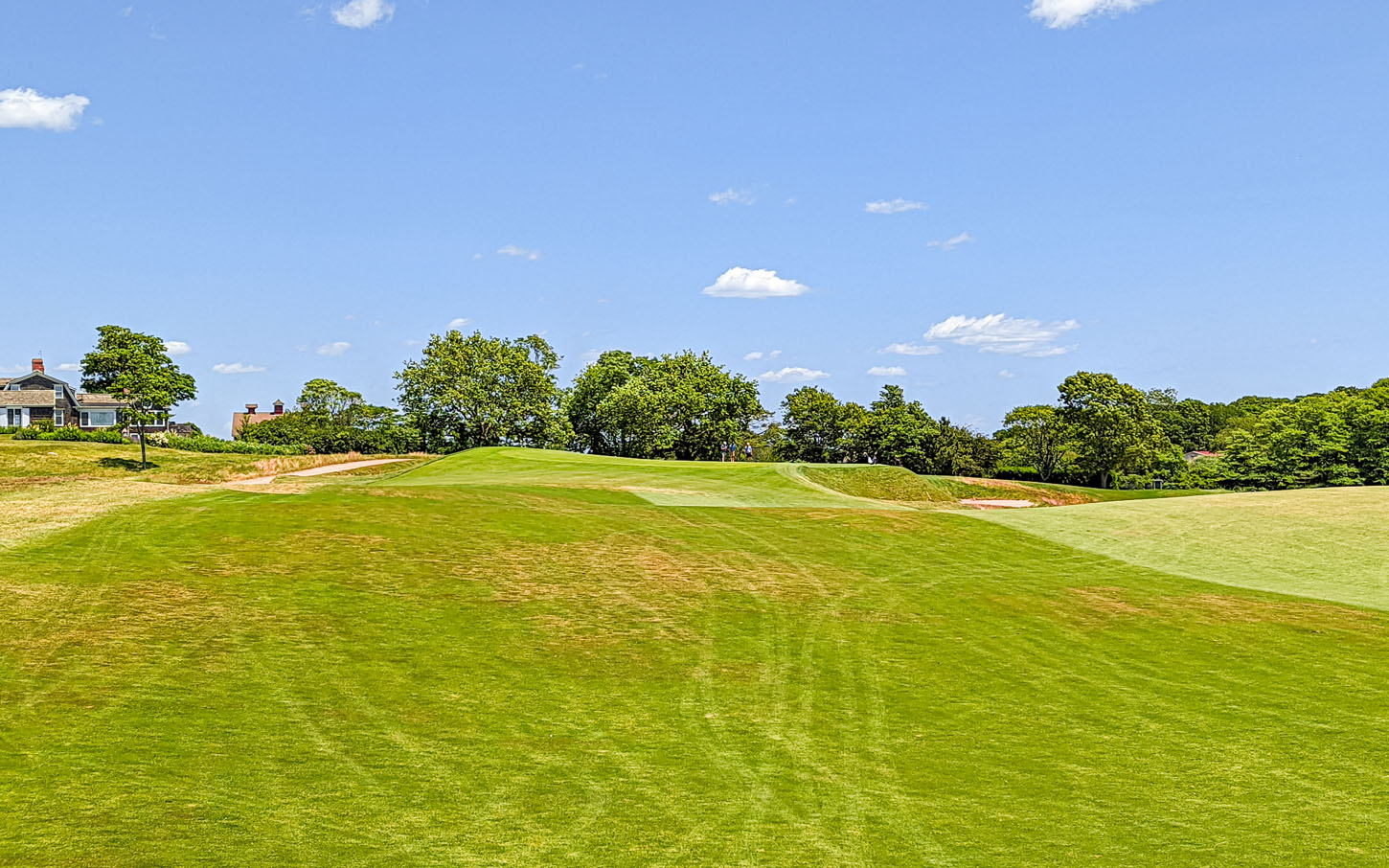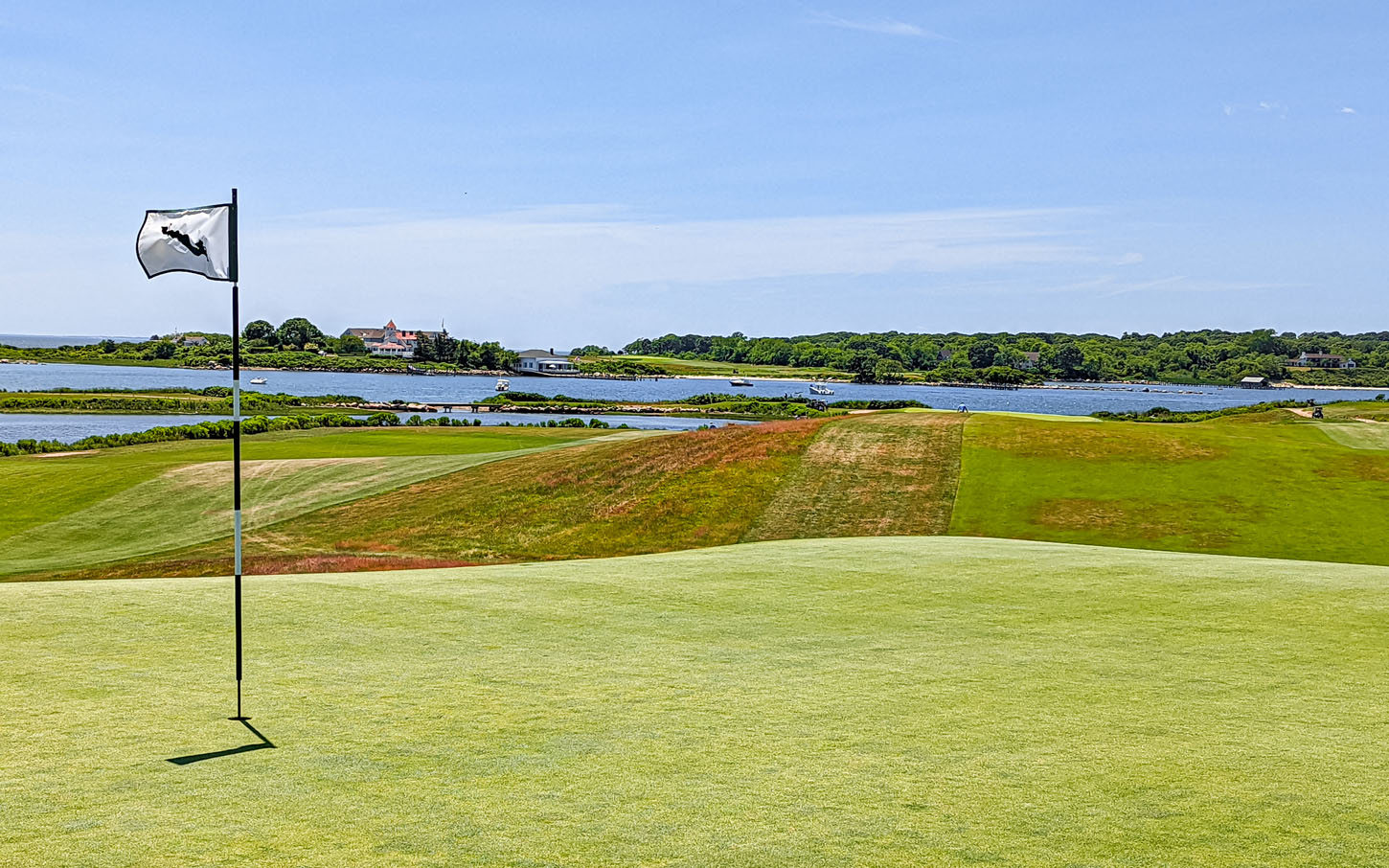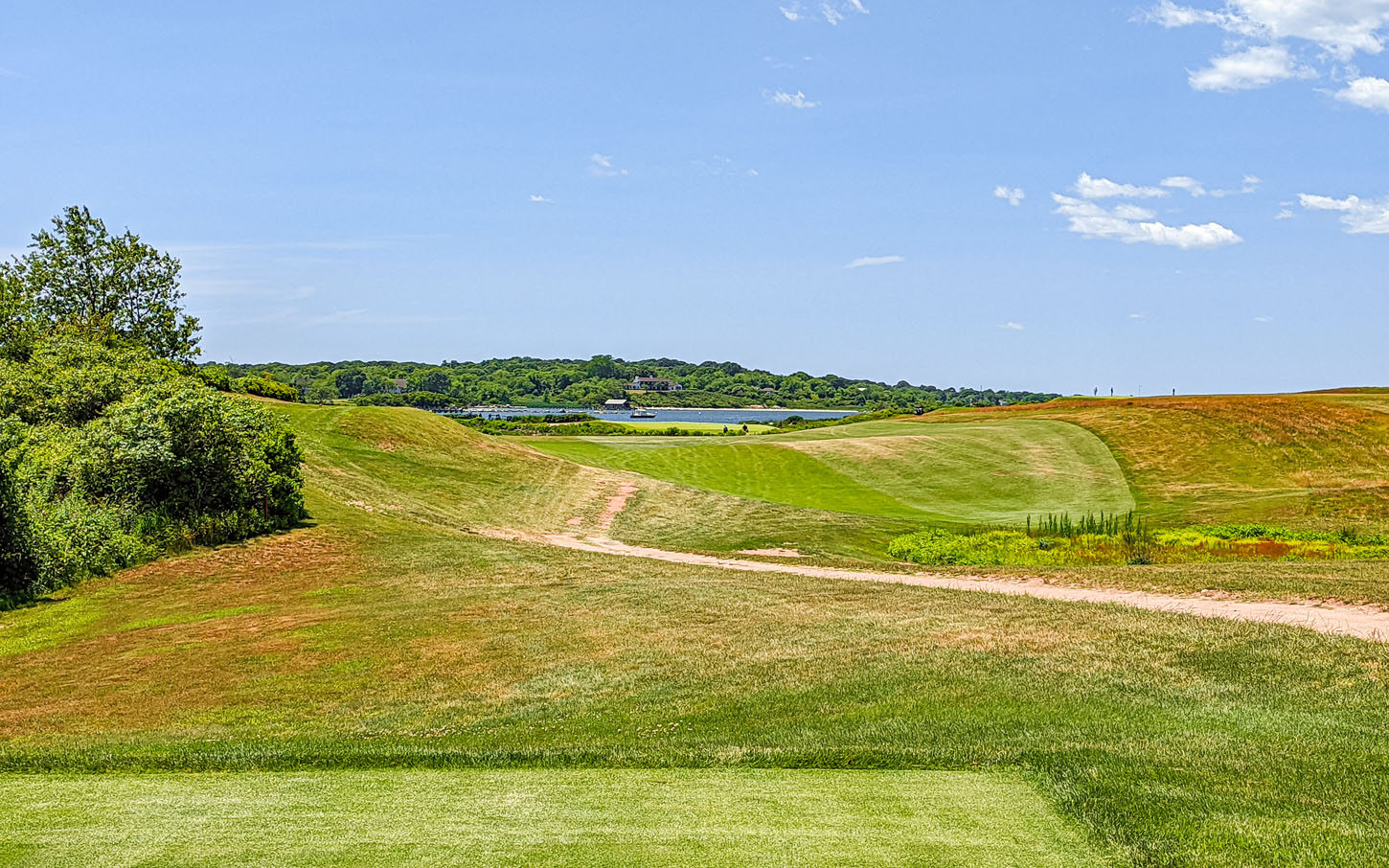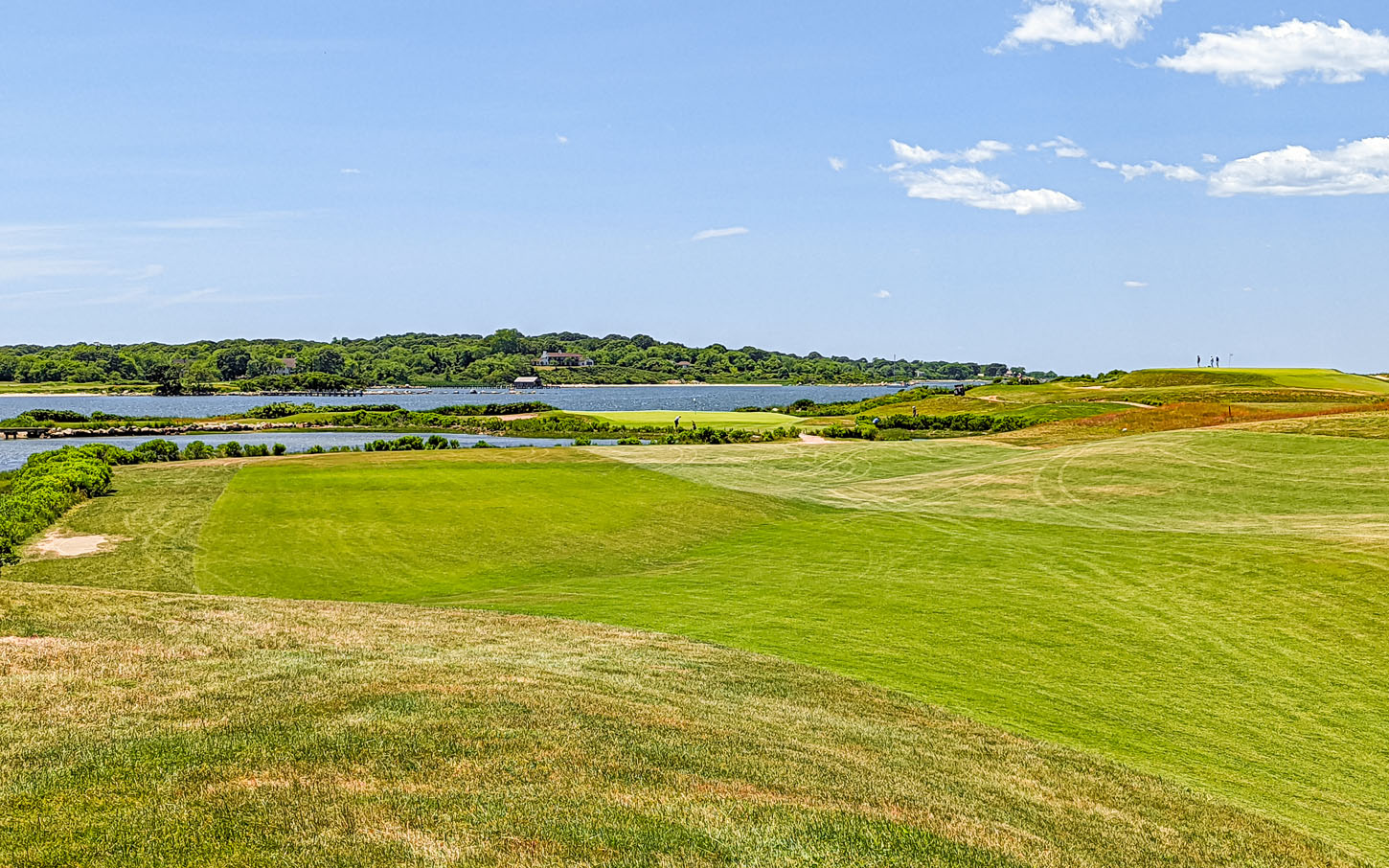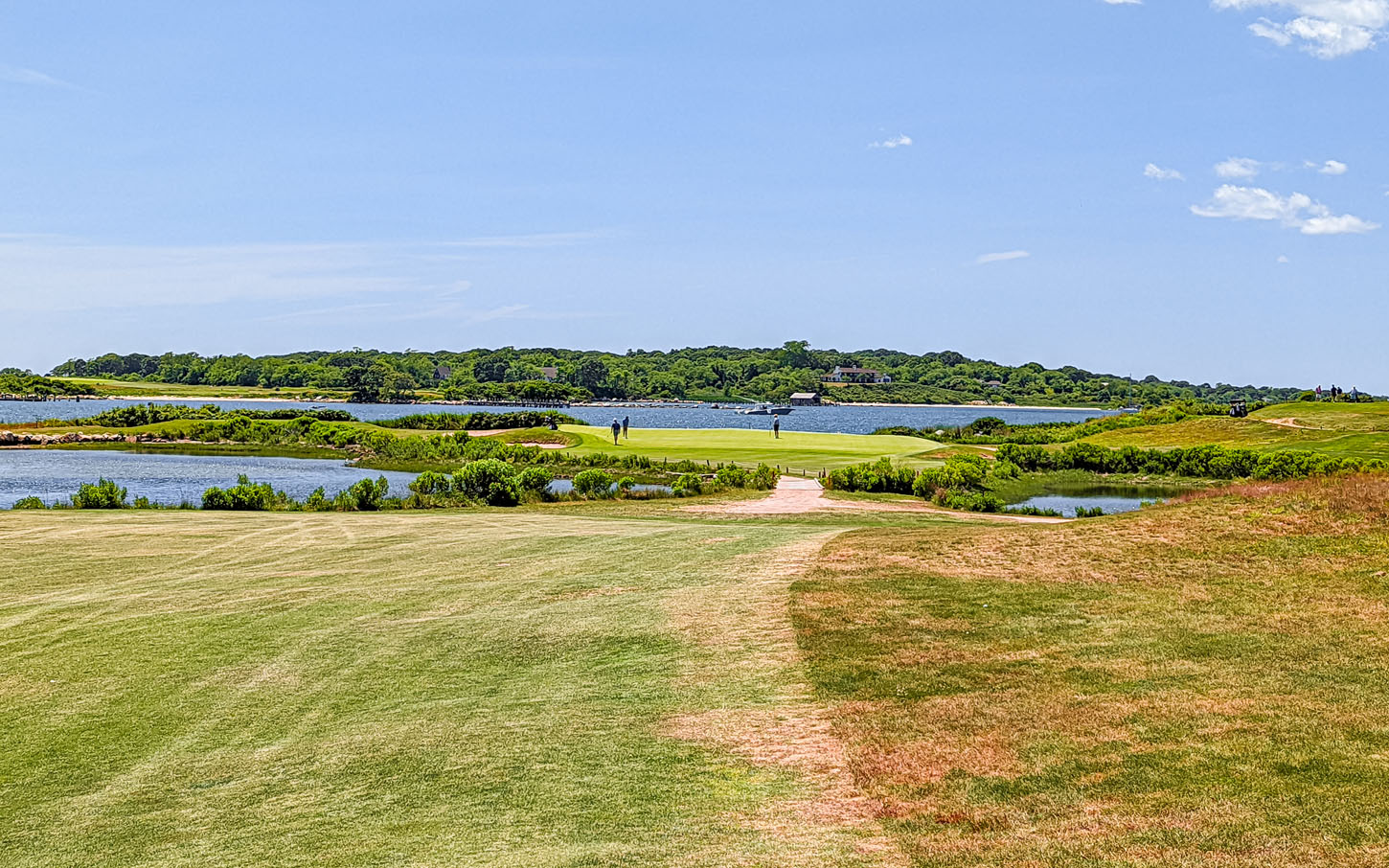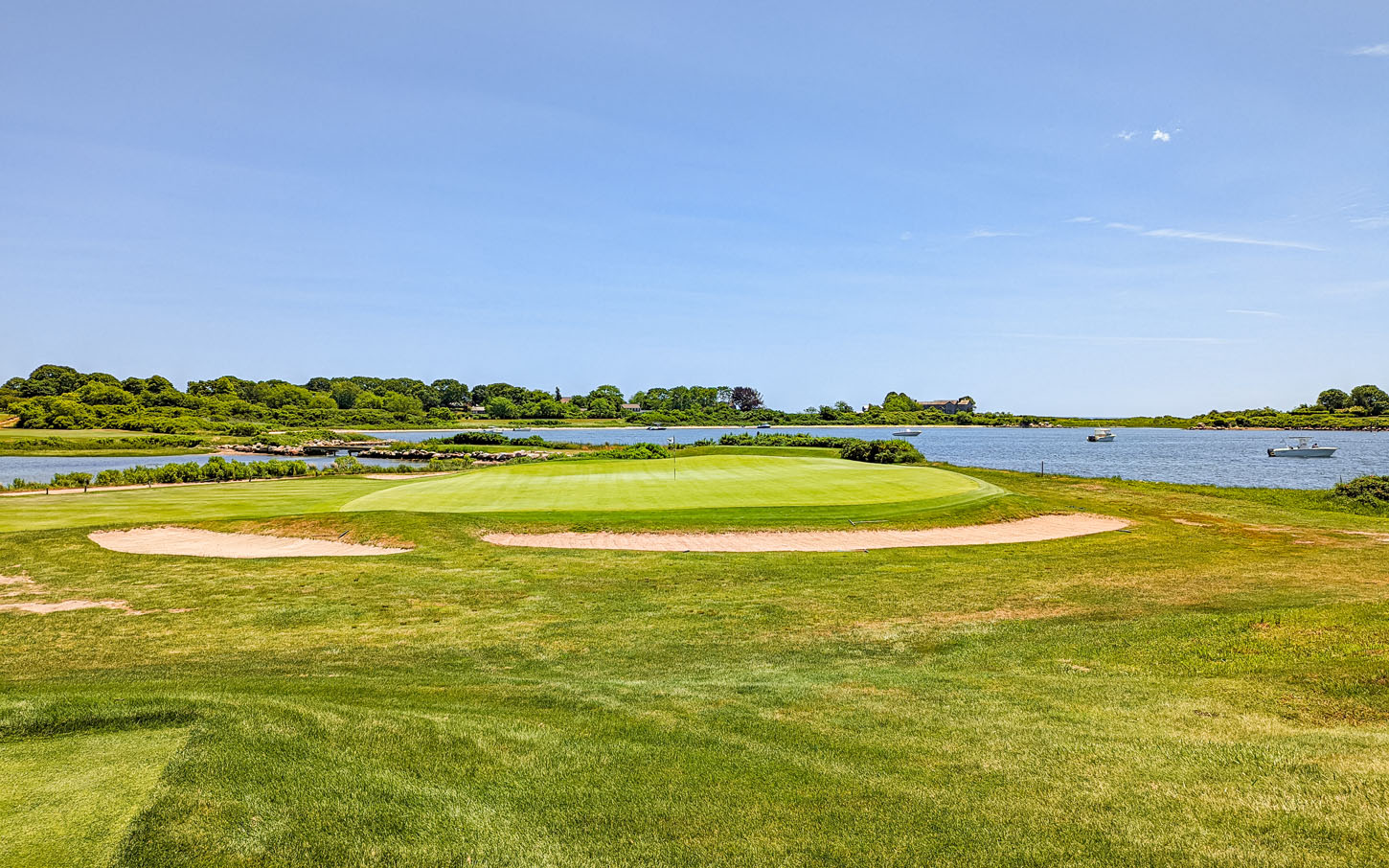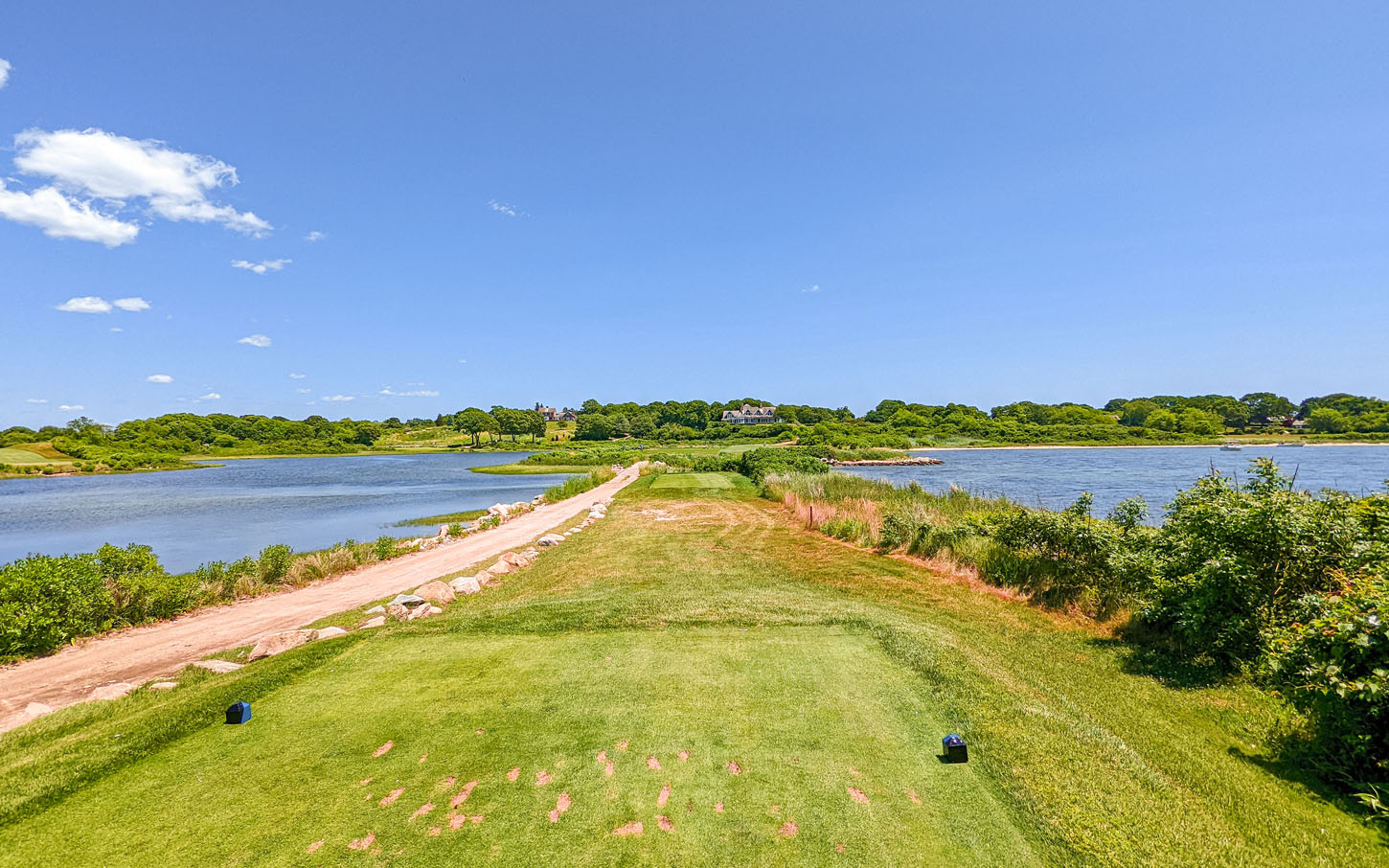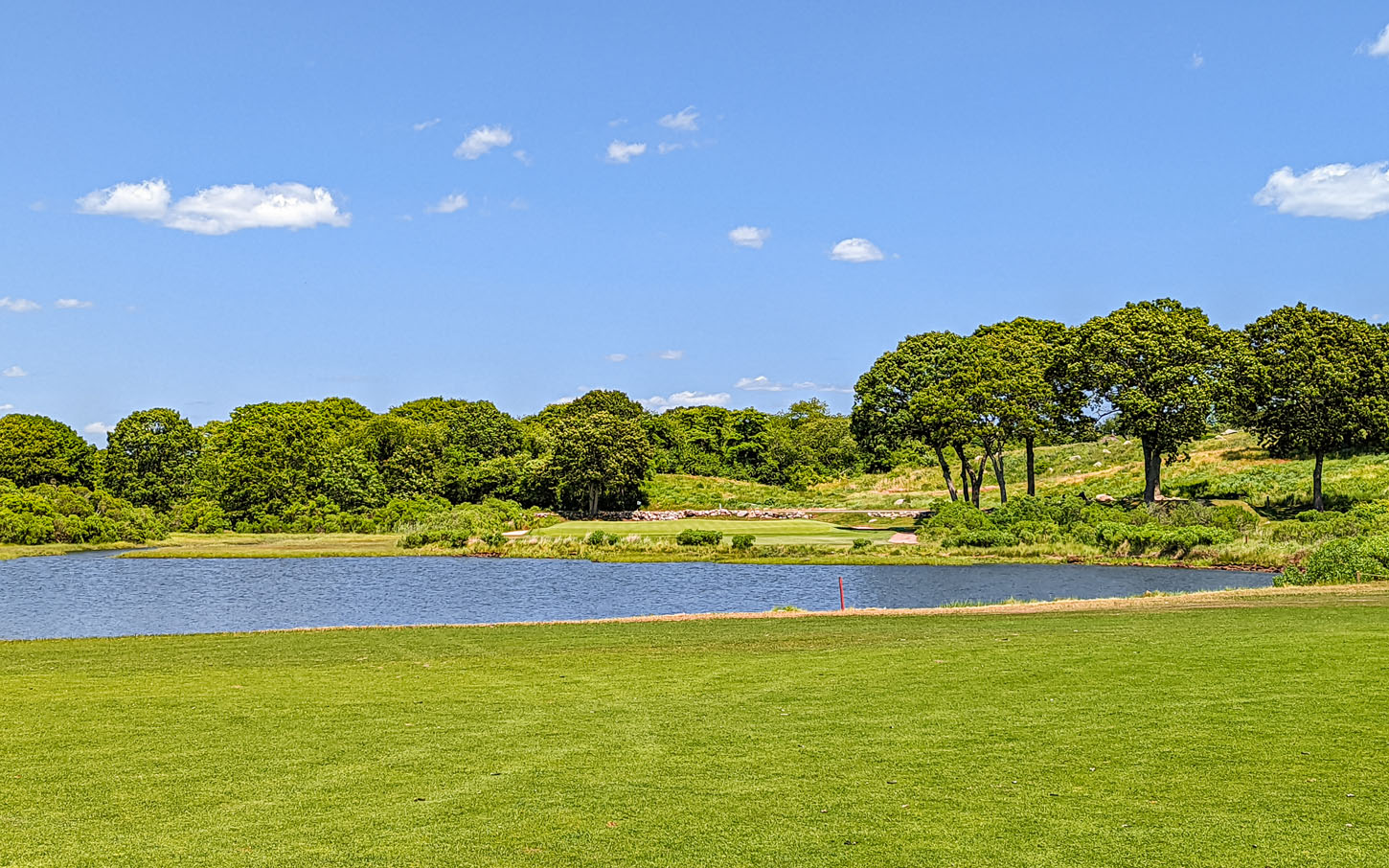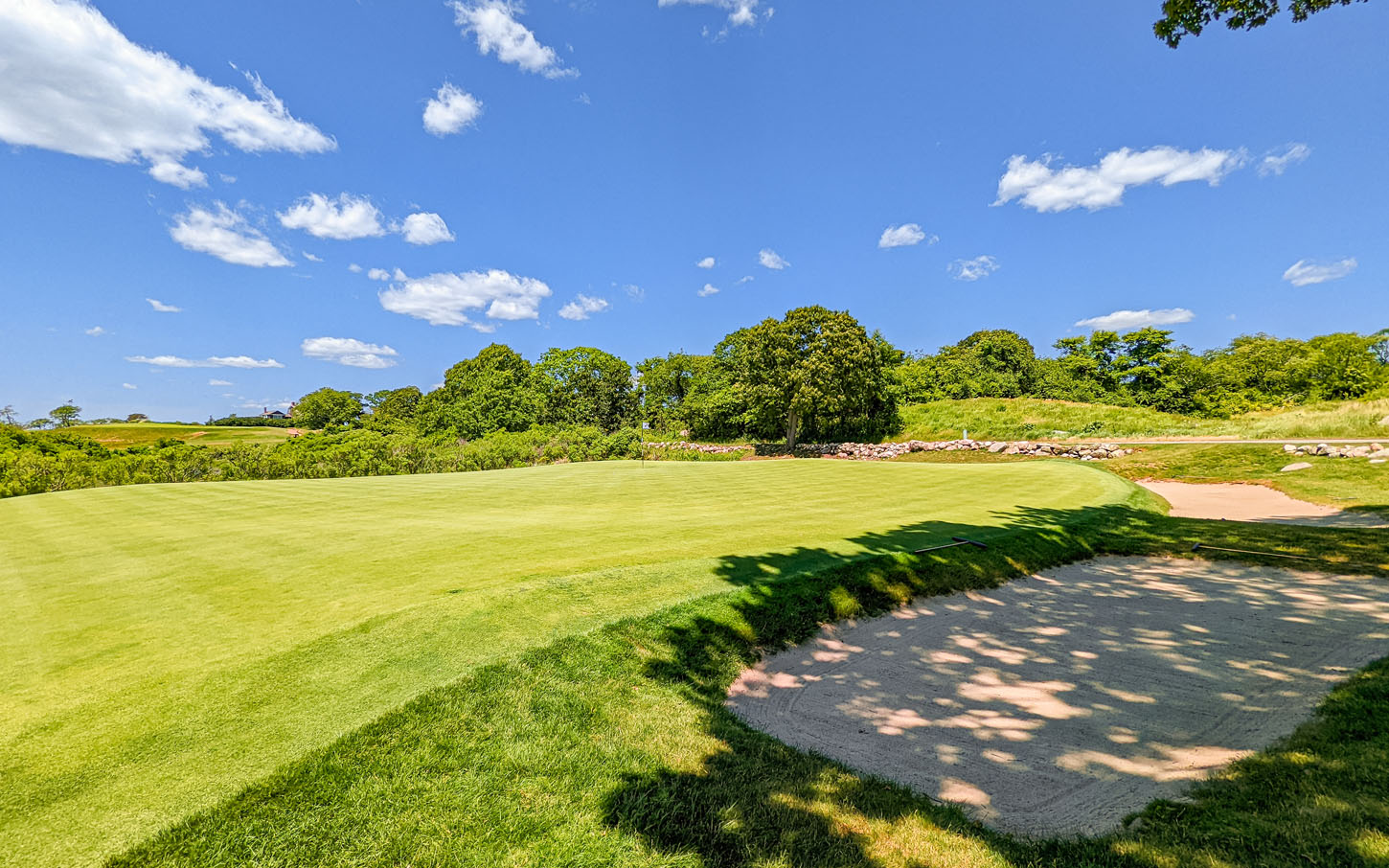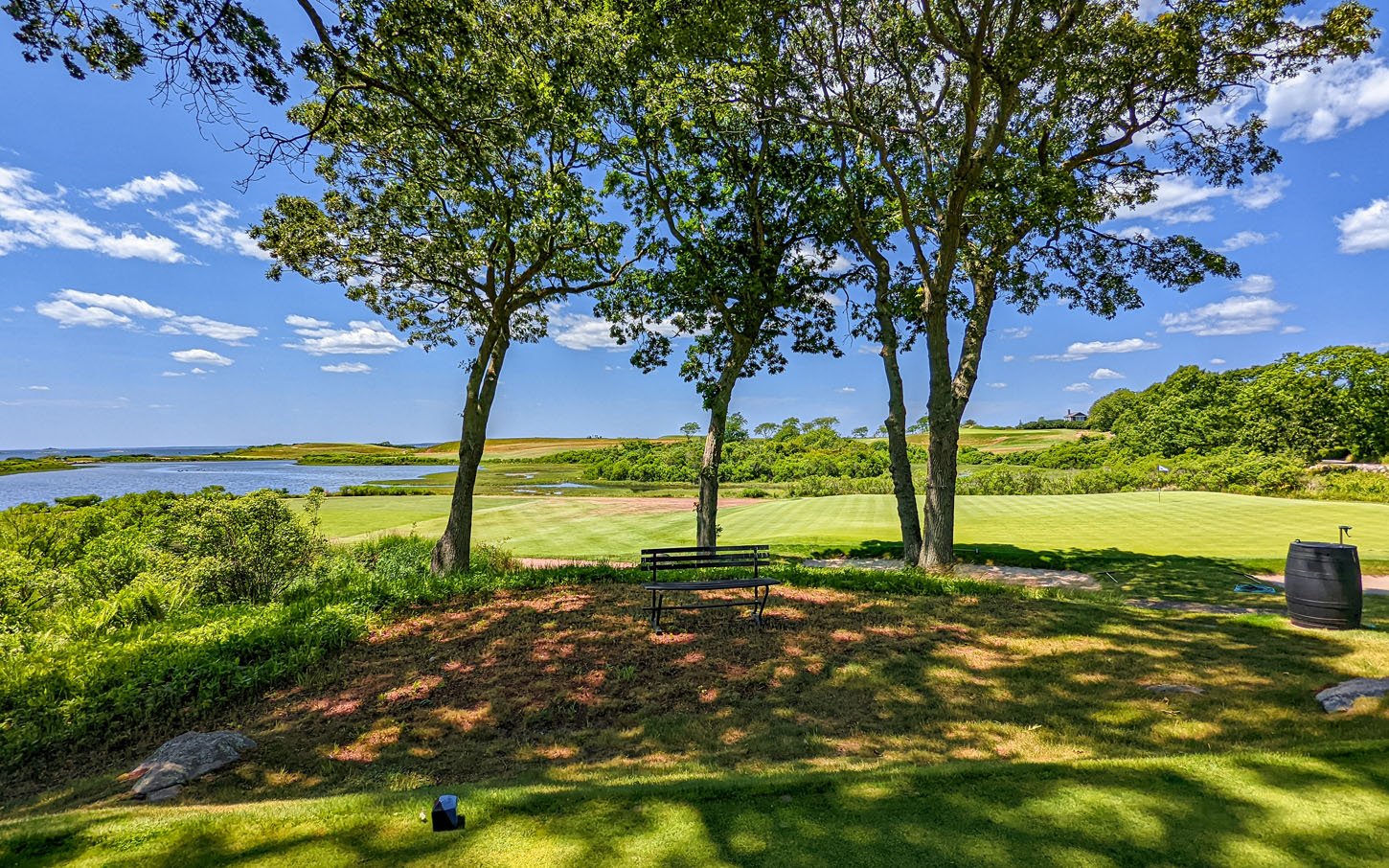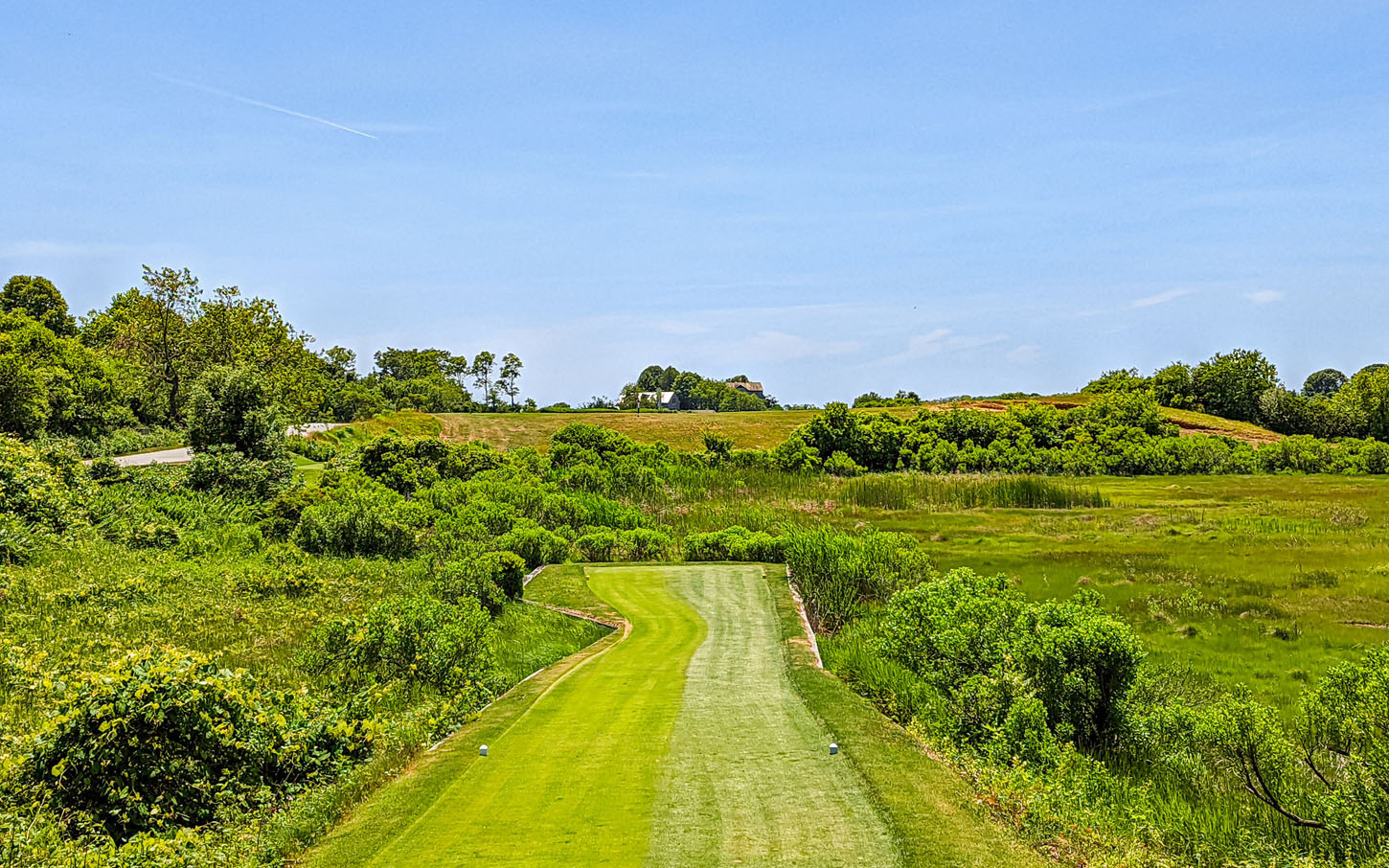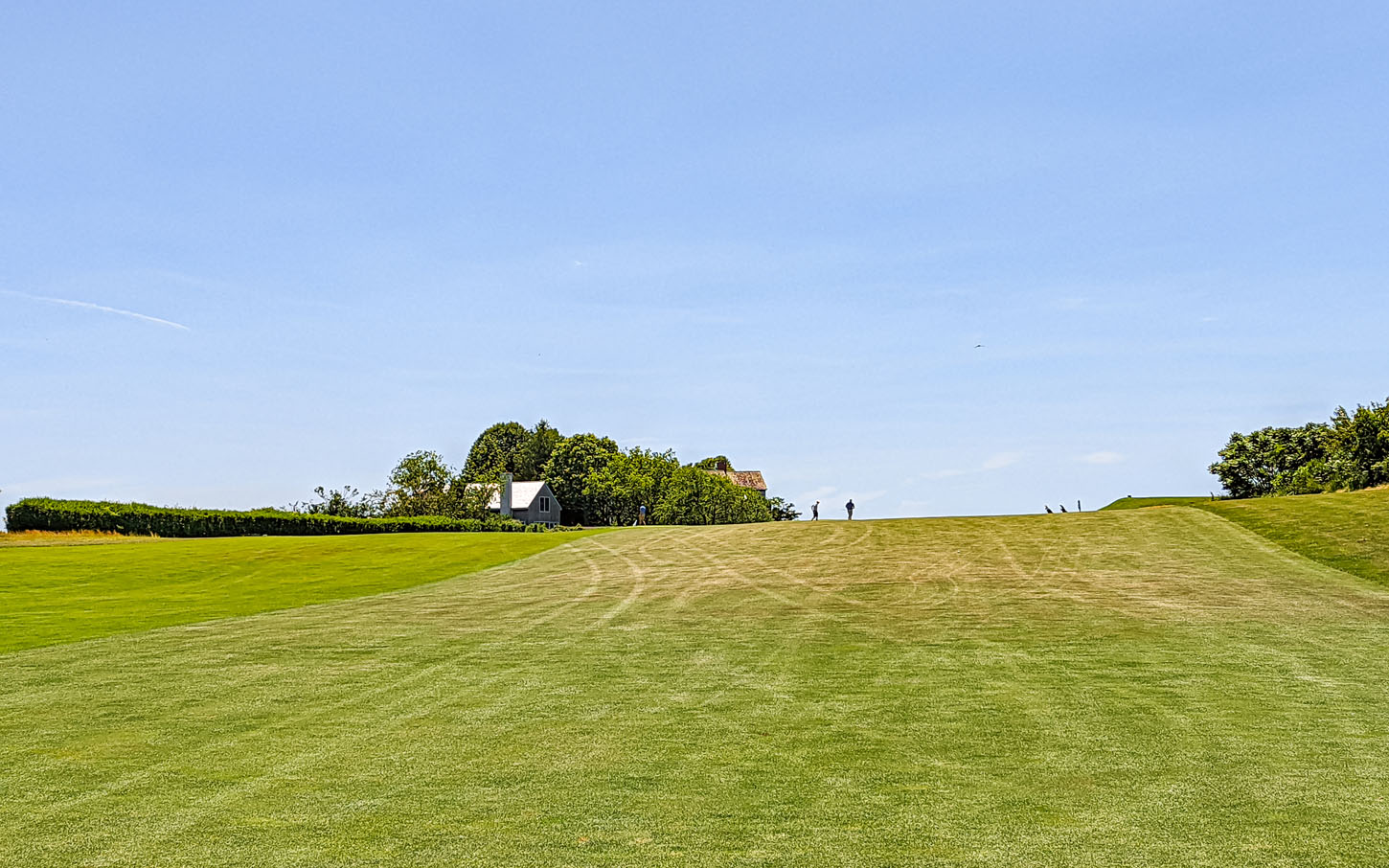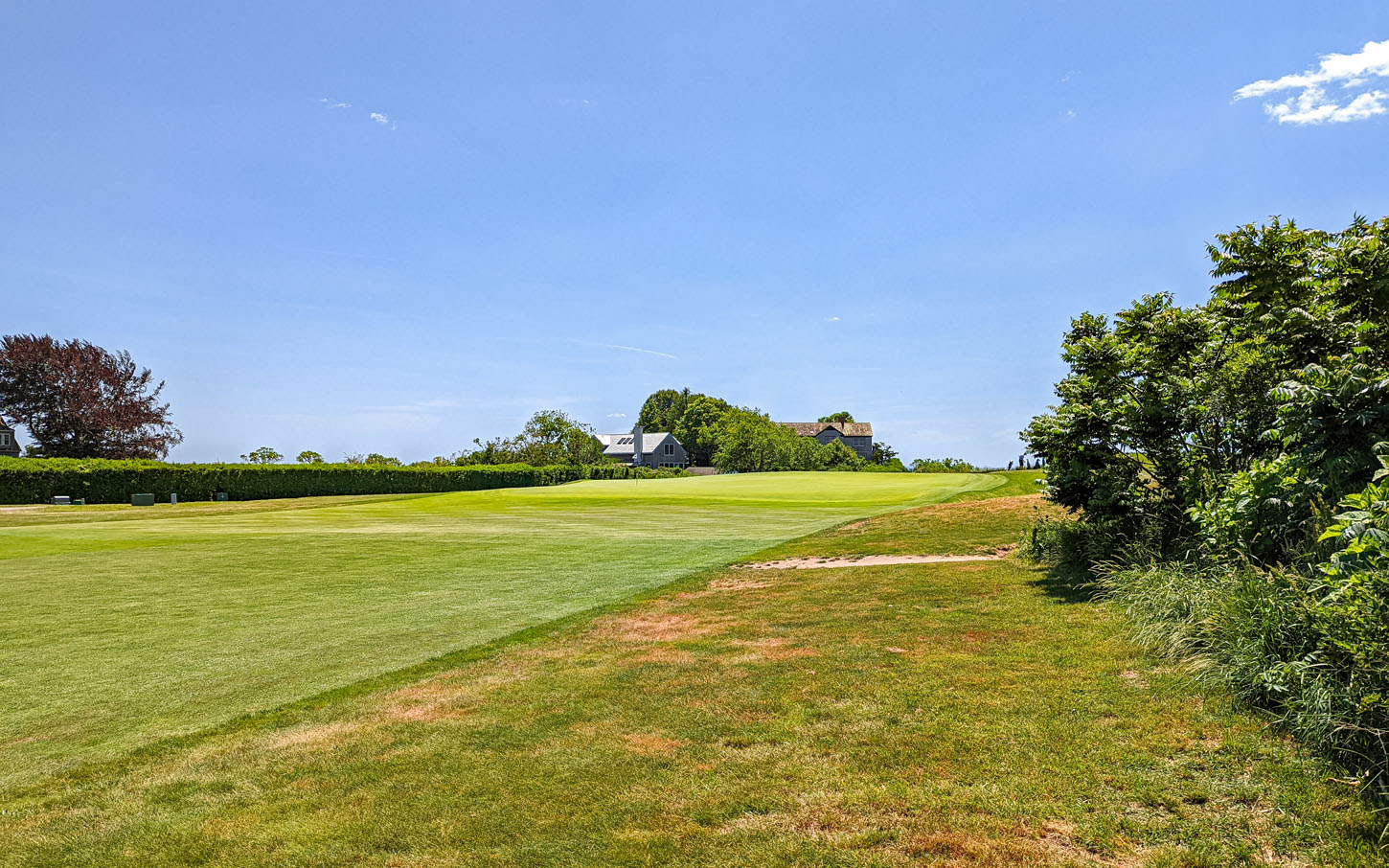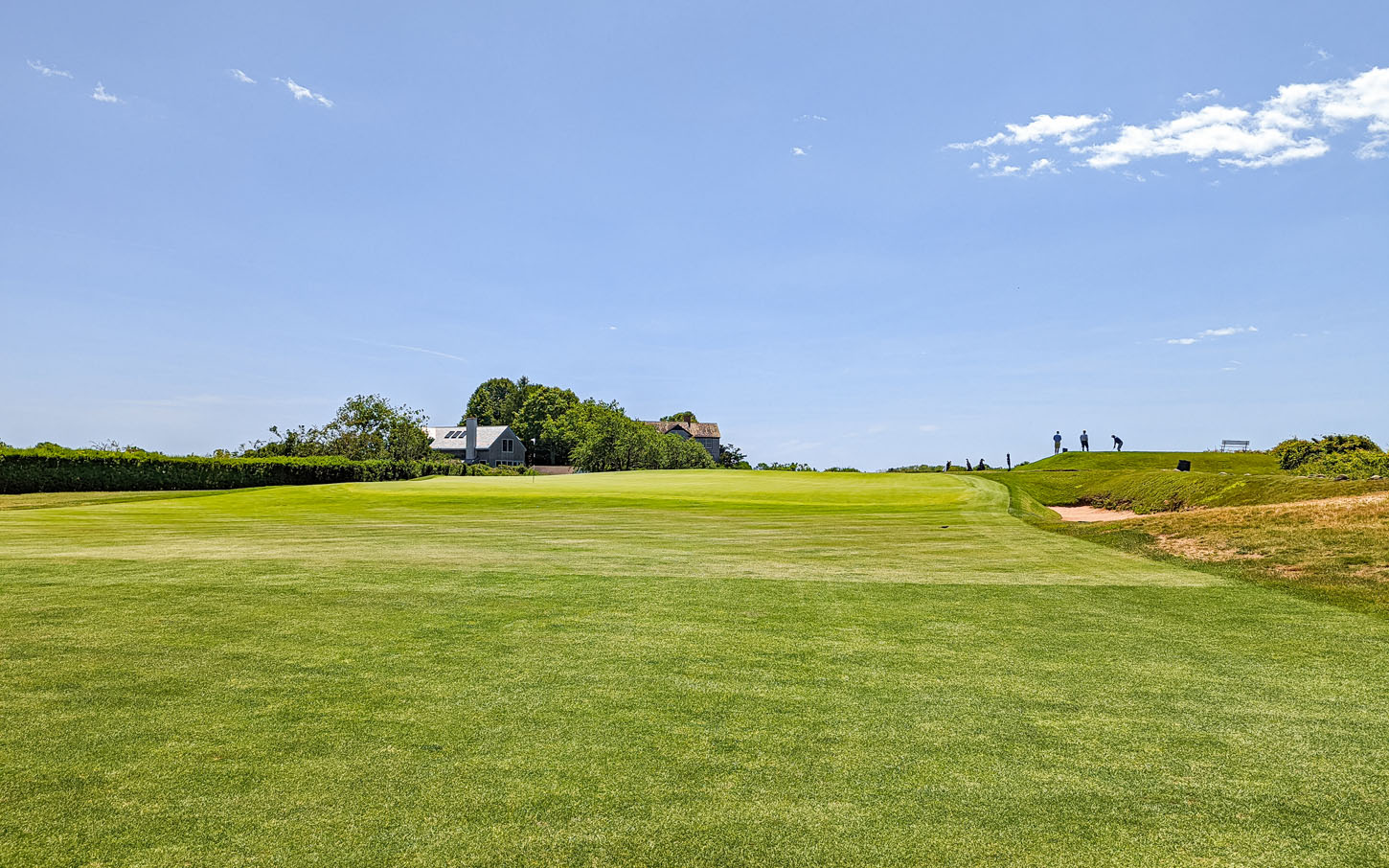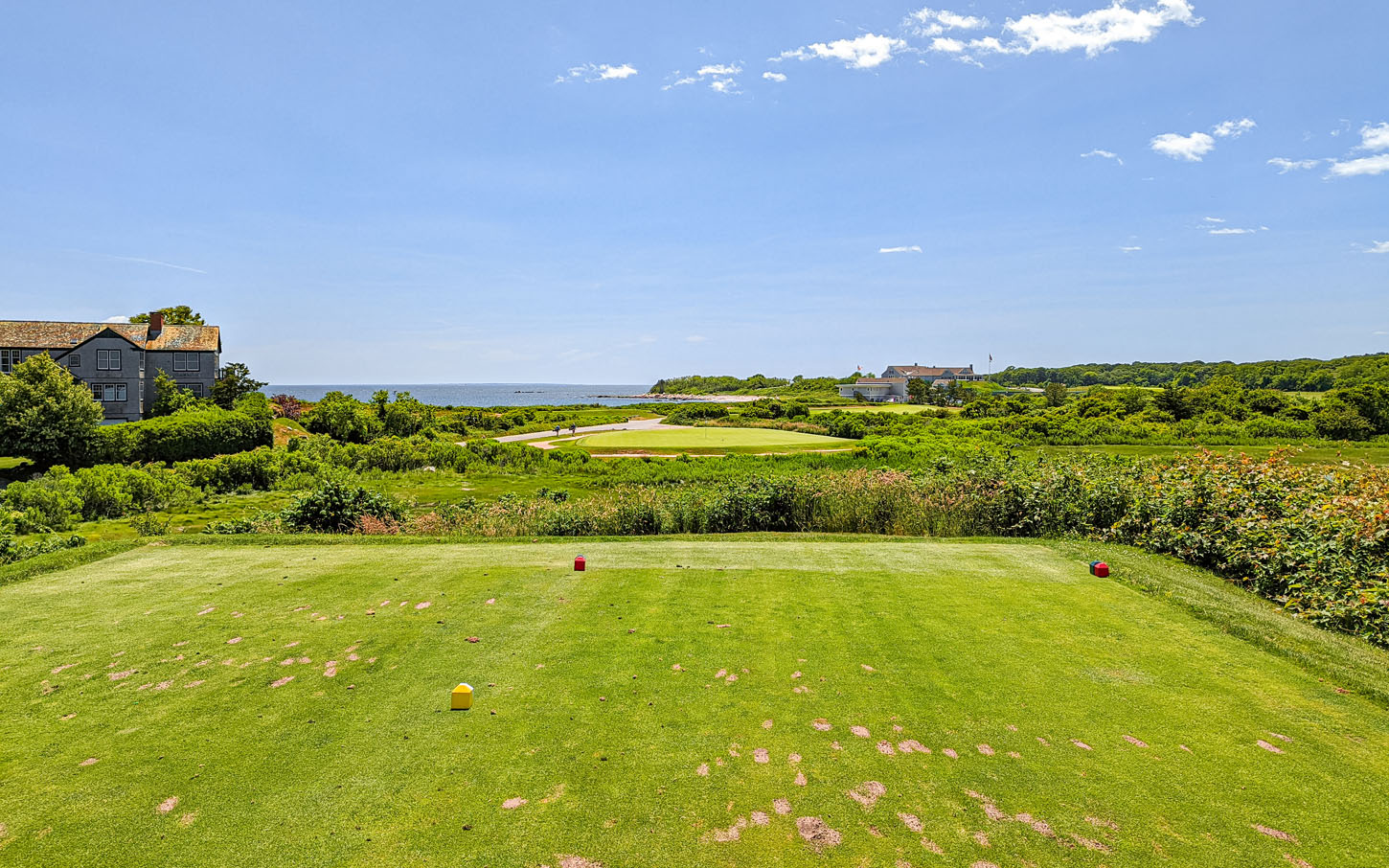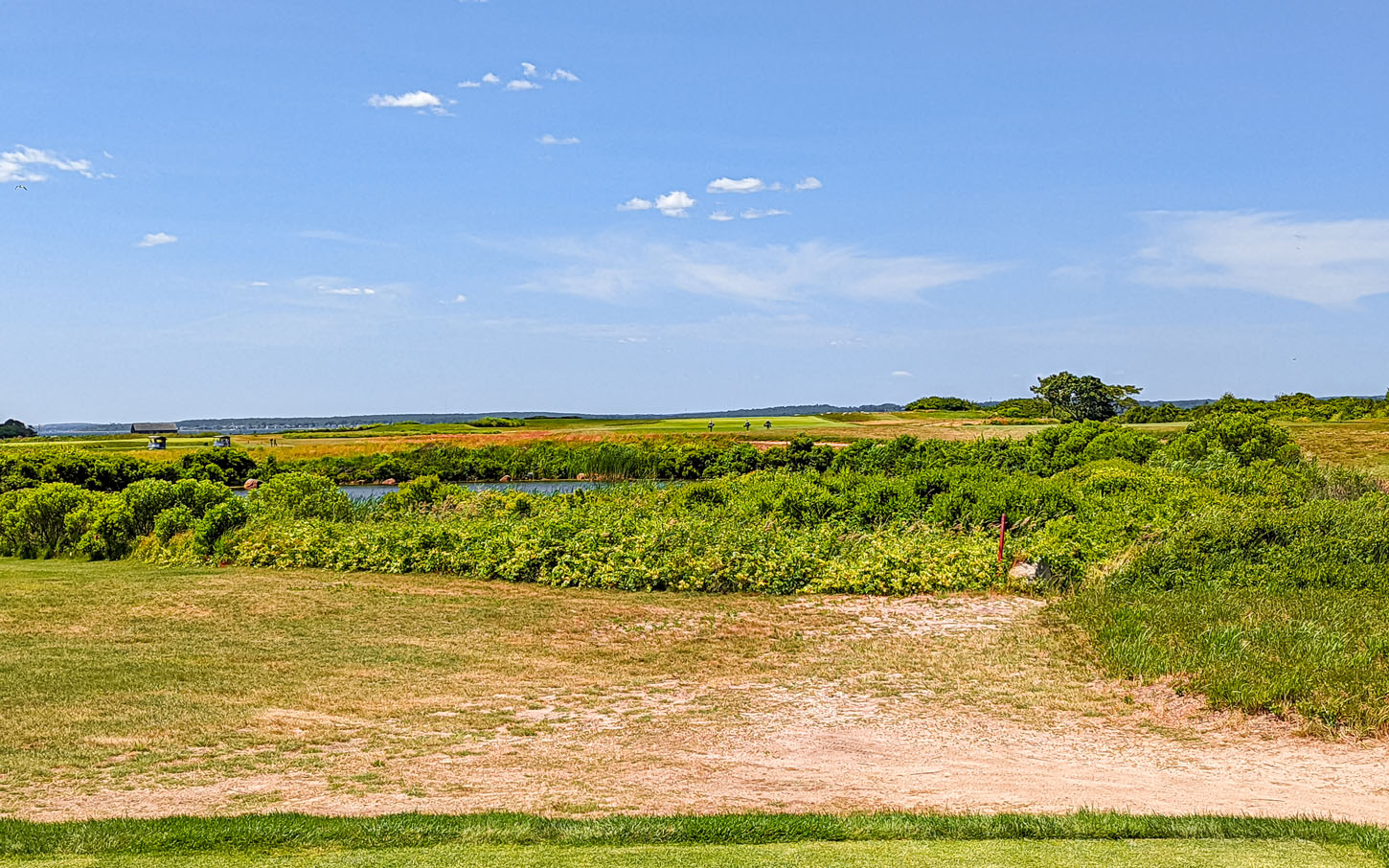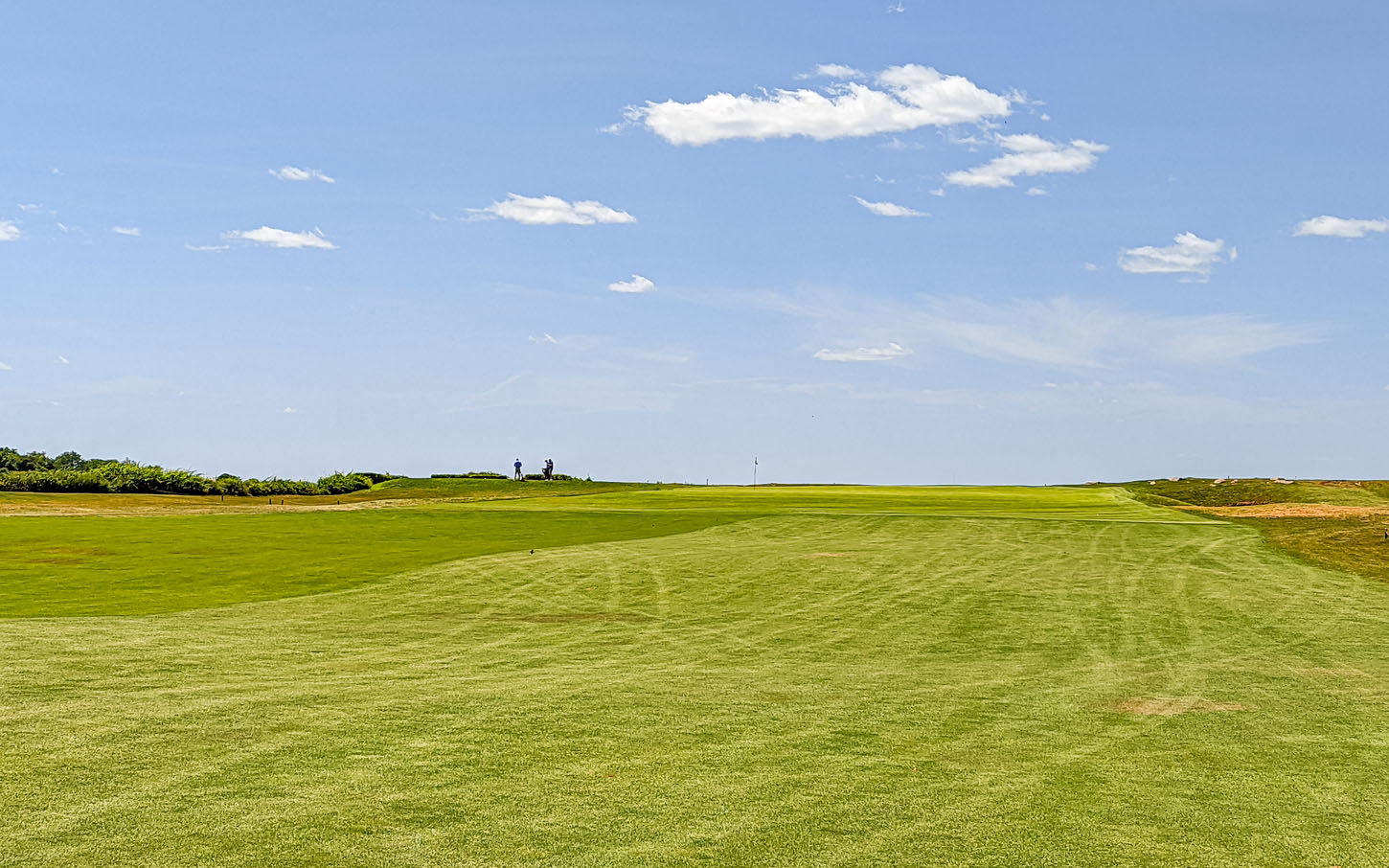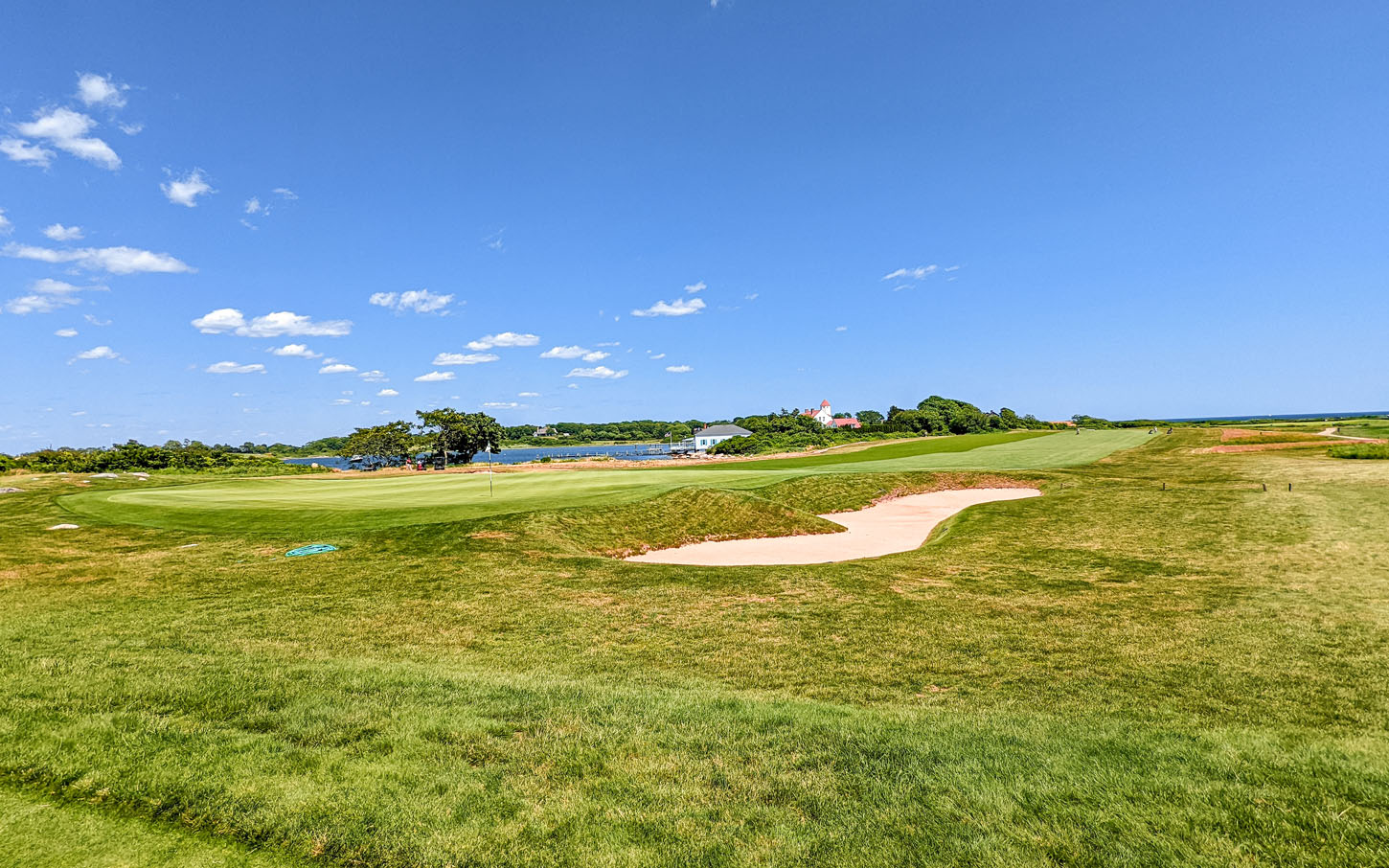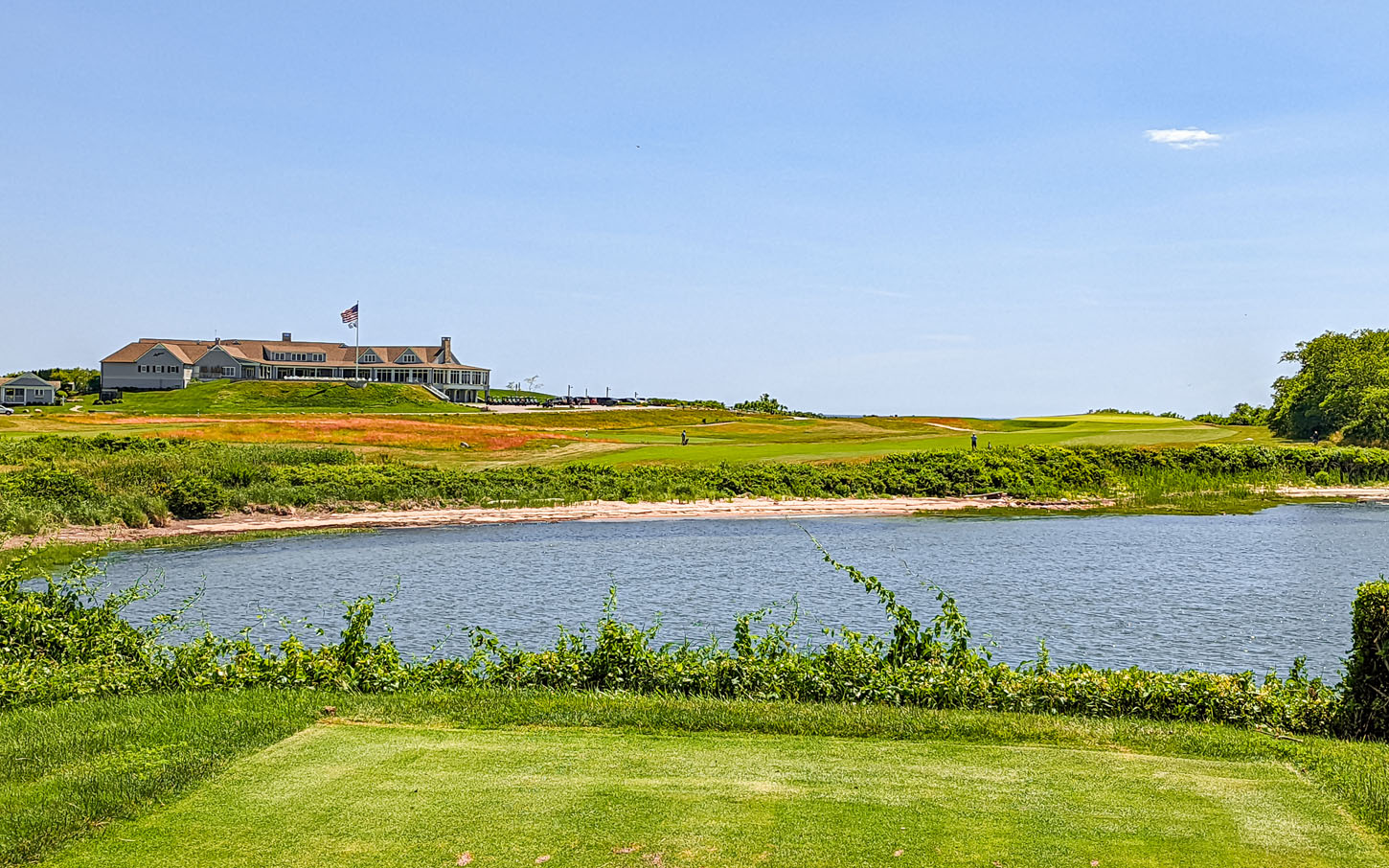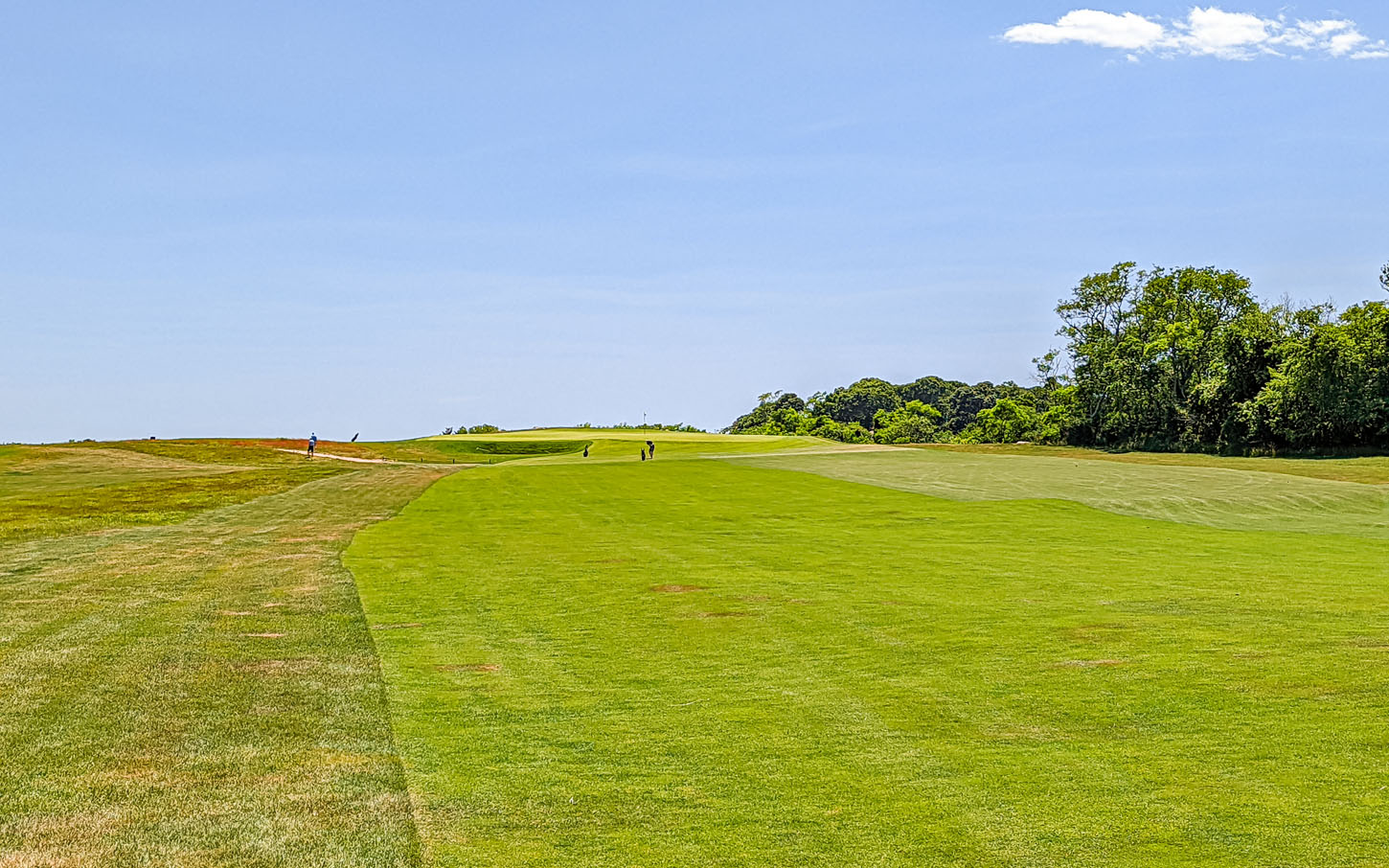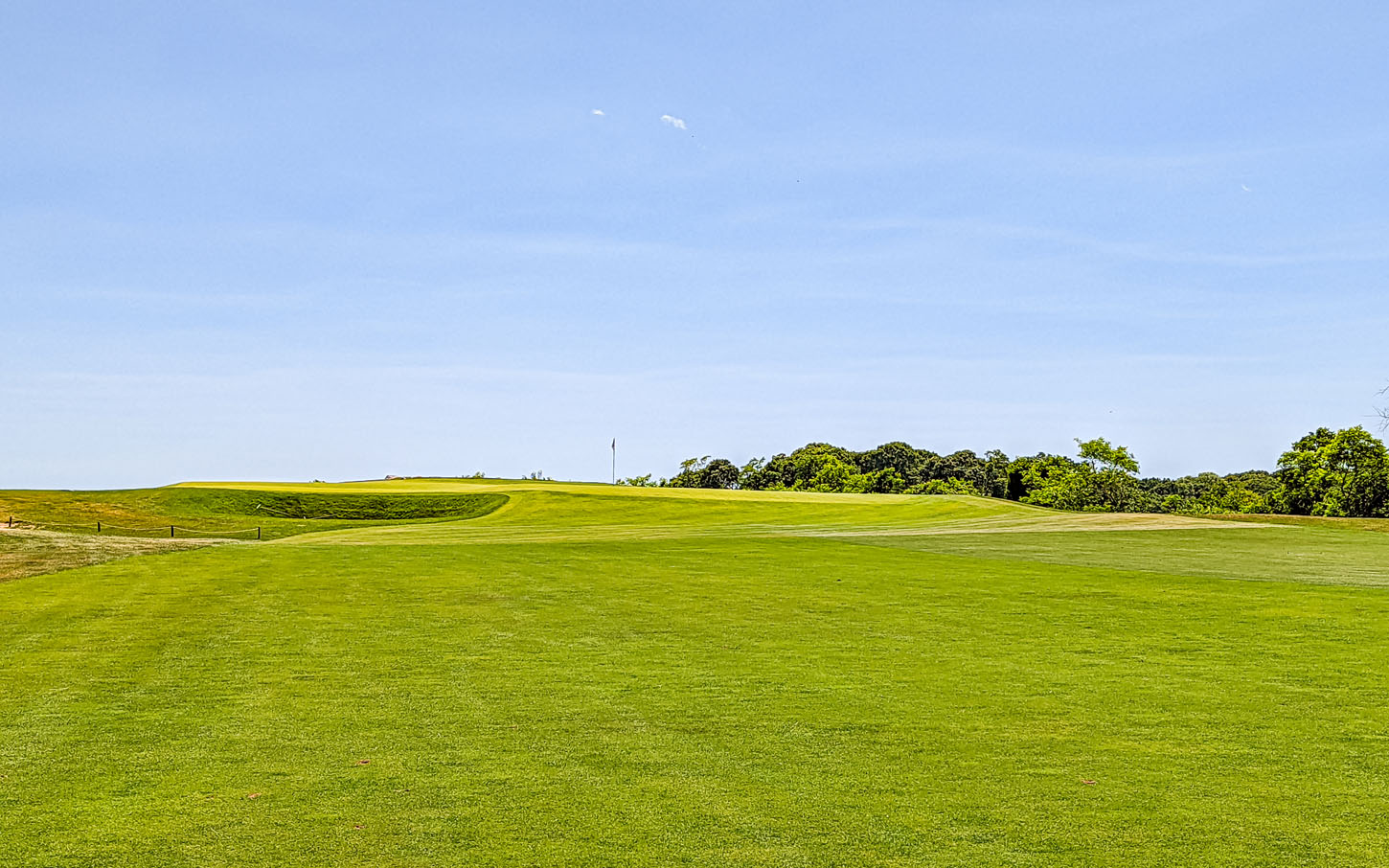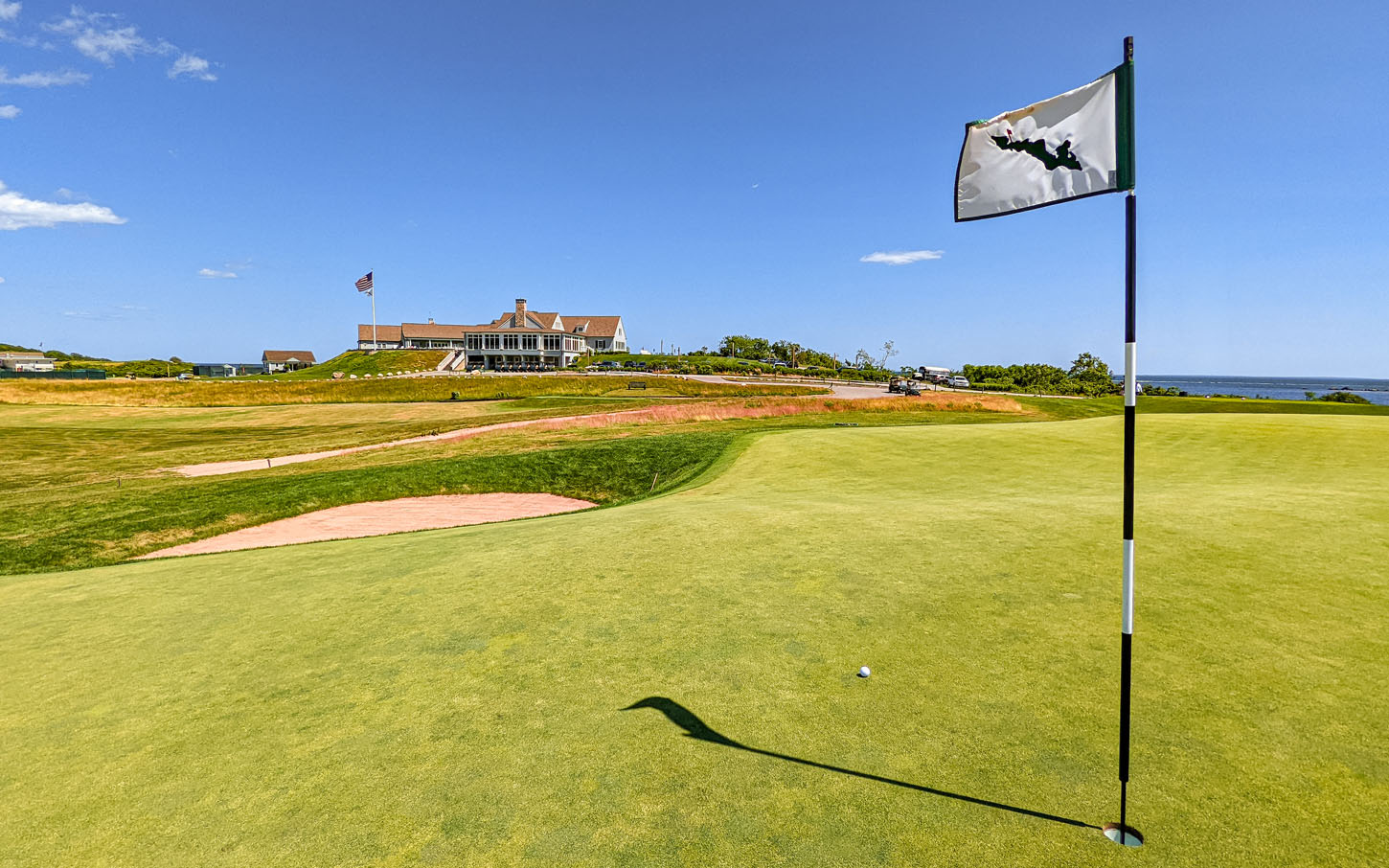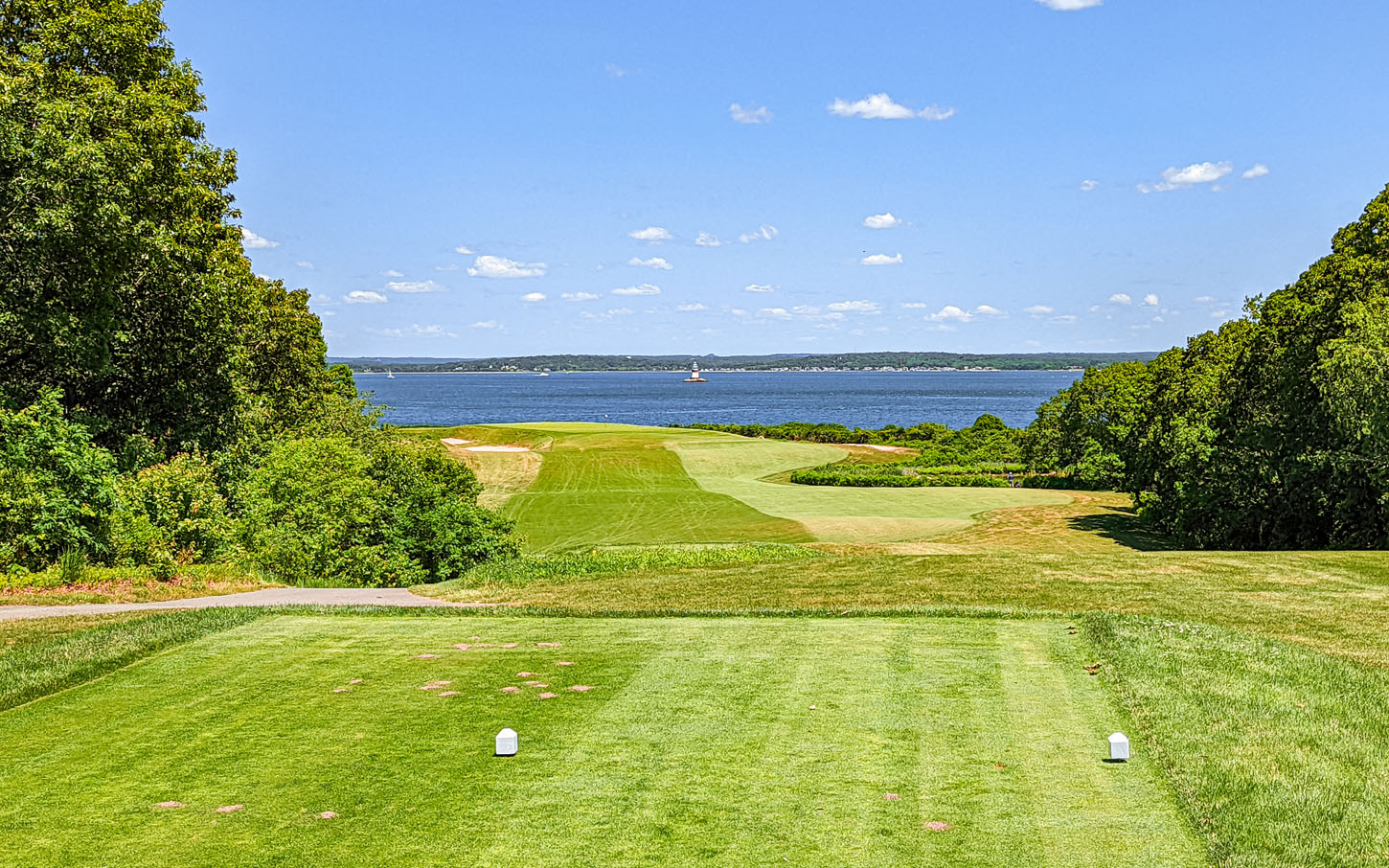
↑ There are few courses in the world that match Fishers Island Club’s setting
I first saw the golf course at Fishers Island Club the way most people do—after a ferry ride and a winding drive across Fishers Island that is one of the more epic slow reveals in golf. New London’s shoreline fell away, gulls stitched the sky, and the island came into focus like a half-remembered photograph suddenly turning sharp. From the dock, the road curled past marsh and meadow and salt-bitten fences until the fairways slid into view, pale and inviting, framed by the ever-moving slate of the Sound.
Golf at Fishers Island Club isn’t something you enter as much as it is something you step back into.
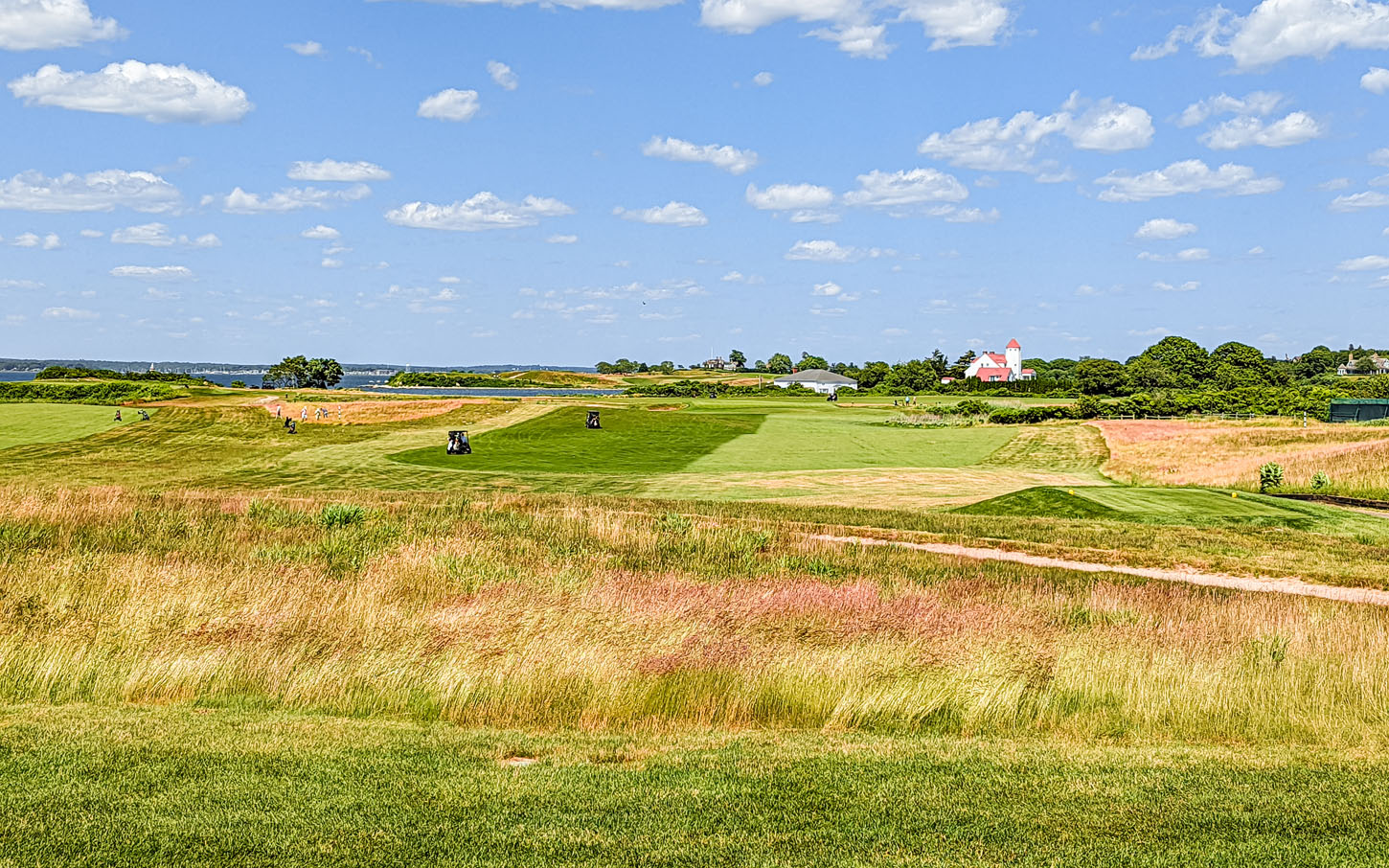
#1: The Opening Lines
On the first tee, the wind was all truth. No flattery or false promises. The starter that day (the head professional) offered a nod that seemed to say: this place will show you what you brought with you today. The turf underfoot was tight and firm, the kind that speaks in quick bounces and long rolls.
You cannot really “learn” Fishers Island, it teaches you. Angle by angle, lie by lie, Seth Raynor’s hand is everywhere, but rarely heavy. The green sites feel inevitable, as if tide and time had placed them there long before a survey stake. You sense the templates—Redan, Biarritz, Cape, Eden, Punchbowl—not as museum pieces, but as living ideas, reimagined by the water’s edge. They ask questions. What line do you see? What line do you dare? What line will you take? Go on.
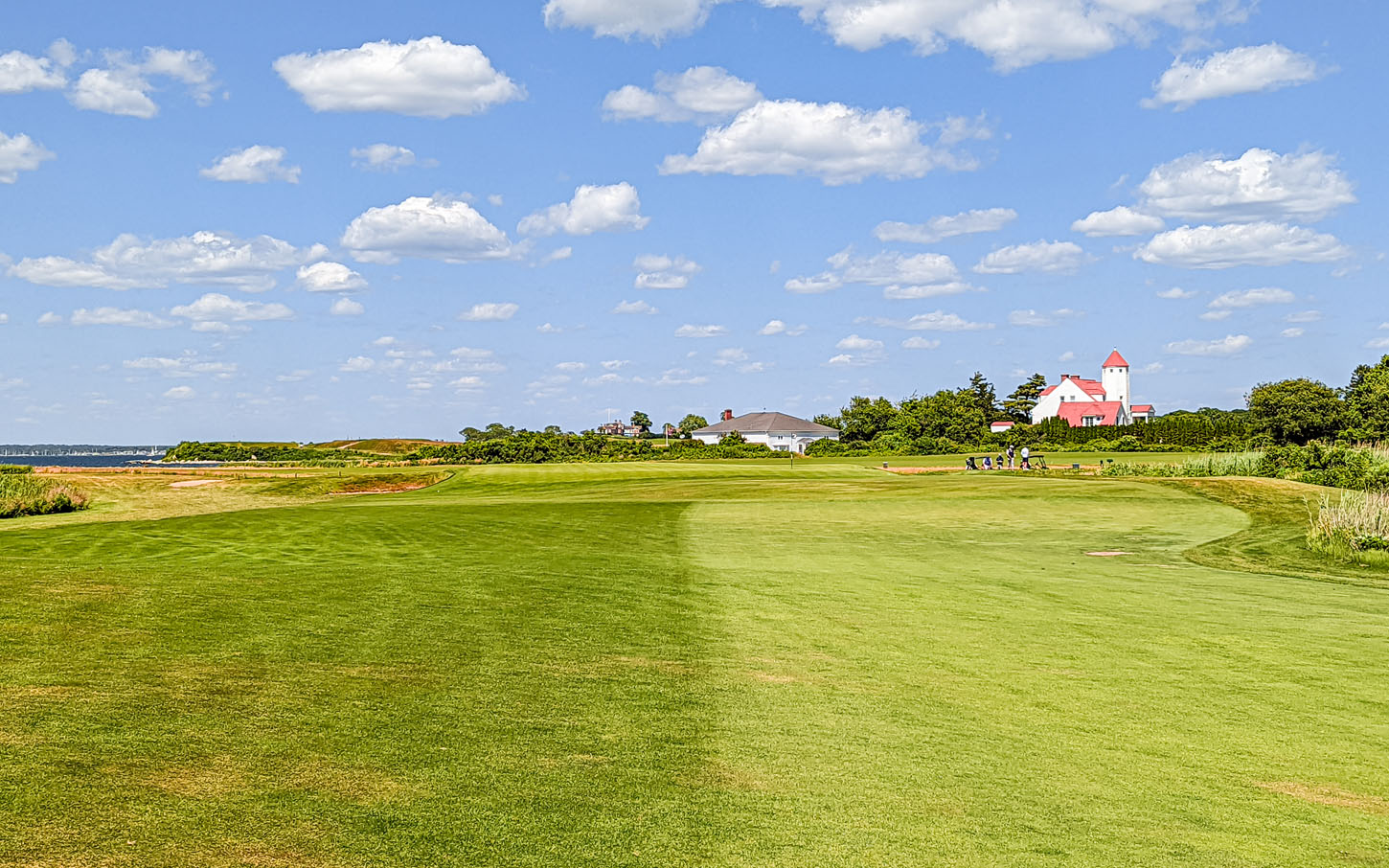
#2: The Language of Angles
On a windswept par four, the line to the left looked heroic and foolish in equal measure. Right felt safe, which is often the first step toward a bad number. The fairway tilted like a held breath toward a green benched against the Sound. A single deep bunker guarded the preferred approach, and the bail-out chattered with fescue whispers: play me if you must, but you’ll pay me on the next shot.
Raynor loved options more than tricks. At Fishers Island Club, that means your decision on the tee isn’t one decision at all but a letter you’re drafting to your future self. Bold now, delicate later. Conservative now, demanding later. The course keeps the ledger; the wind collects.
At the fifth hole, the Biarritz arrived like a rumour you hope is true. The swale in the green was a sentence with a comma, forcing rhythm, or lack thereof, into your swing. Land your ball on the wrong clause and you are translating a language you only partly speak. When the putt finally crested, broke, and shimmied down the far terrace, it felt like a fitting conclusion to the paragraph you were writing.
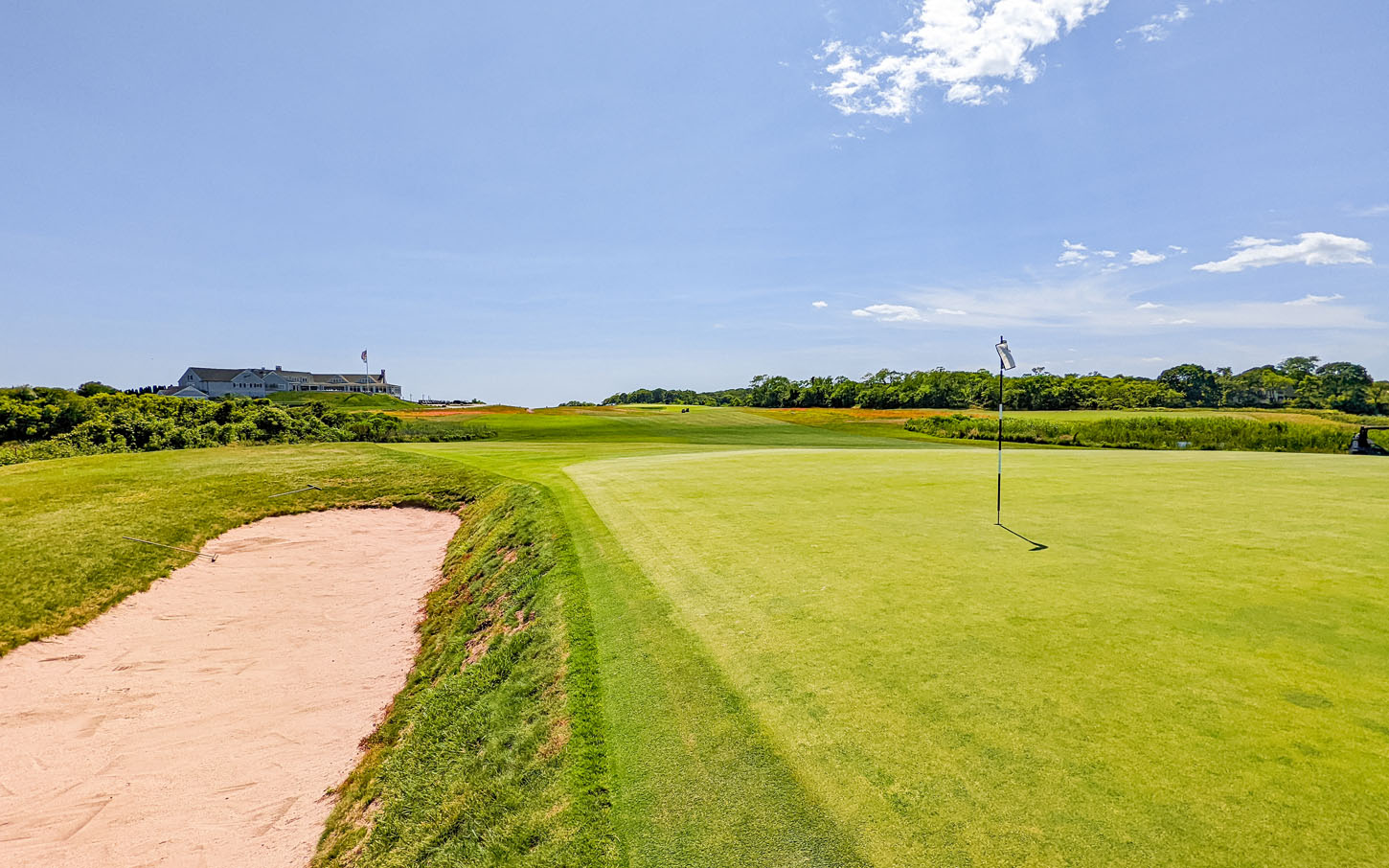
#3: Salt and Silence
On the inward nine, there is a section of the course where the world moves beyond quiet—out by the 14th or so. Ocean and marsh lap at the edges of fairways, and the Sound seems to lose its colour and become a feeling all at the same time. Tee shots carry over water that is no longer hazard but context. You sense the old maritime bones of the place; boat docks stand at the margins like punctuation marks.
A short hole appeared just prior. One of those Raynor short holes whose true identity—Eden—proves small can still be stern but also a form of paradise. Hit your number or step into the circular logic of recovery: delicate, then desperate, then done. When my ball held its spot, a gust rose off the water and pushed a shiver through the fescue. I exhaled. Golf, like the sea, offers approval in moments, never guarantees.
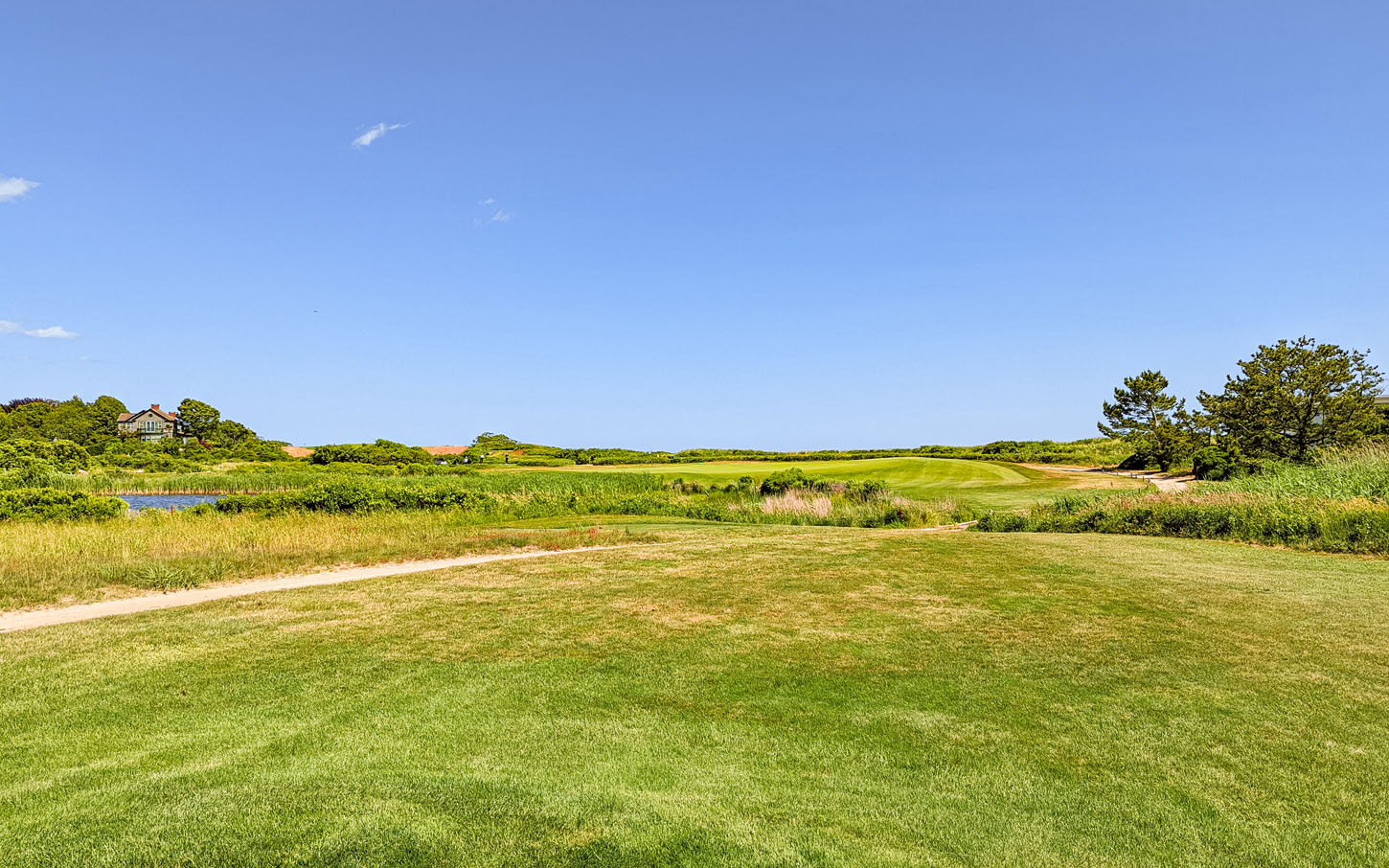
#4: A Conversation With the Past
Fishers Island Club tends to converse with the golfer. They get C.B. Macdonald’s ideas and Raynor’s geometry with the often “uncooperative” weather always wanting a co-design credit. The Cape asks you to decide how much of the corner you can actually chew. The Redan turns your confidence into a test of distance control and courage. The Eden tests the very old truth that par threes should be spare and stern and beautifully simple to describe, but never simple to play.
Walking at Fishers Island Club the golfer will notice the small things: the way approaches feed or repel; how run-ups are offered to the player willing to flirt with trouble; how every green possesses a logic you only fully understand after you’ve been politely punished so gracefully.
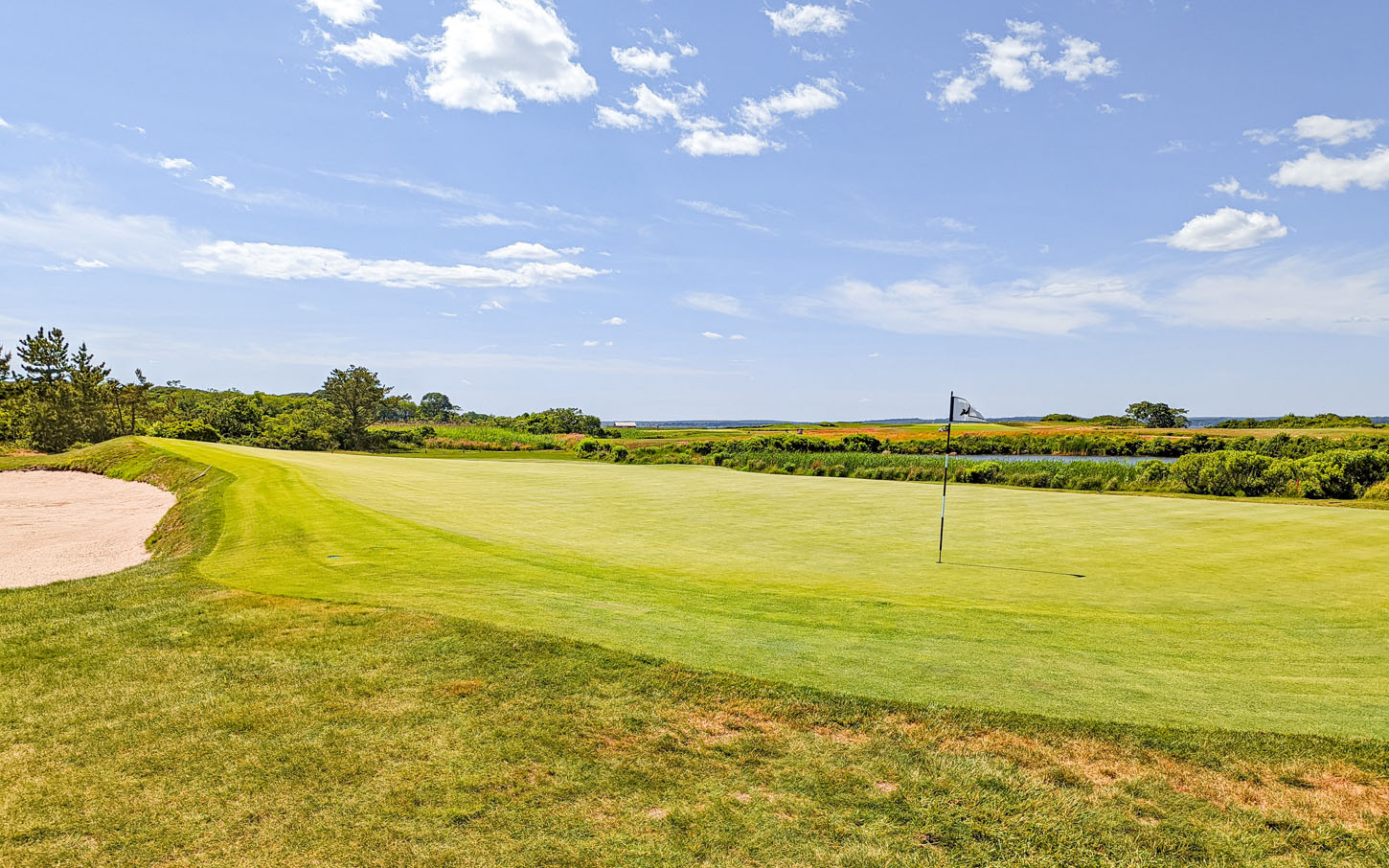
#5: The Last Light
Evenings on Fishers Island stretch. Long shadows turn the fairways into topographic maps. On the closing holes, you sense the arc of a novel finding its final chapters. The course becomes slightly more generous and somehow more exacting—one last carry over a bite of the water, one last approach where firm turf and wind argue over who owns the next bounce.
My last putt slid past the edge and kept sliding, then stopped just when frustration and gratitude reached a draw. I tapped in and looked back over the ground I had covered. Fishers Island Club had simply been itself the whole way through while I became a better version of myself for having experienced its magic.
Walking back towards the clubhouse, the breeze lifted again, driving through the grass with that familiar, salt-bright whisper. The ferry would carry me away soon enough, but I didn’t want to leave. The course had done that thing only the best courses do: it had sewn a little thread through my memory, tied to a place I could revisit with every swing I cared to imagine.
In the final moments of the day, I grip myself away from my struggle to leave and exit with gratitude. Hoping to one day return, if I can, with a little more nerve and just as much excitement.
